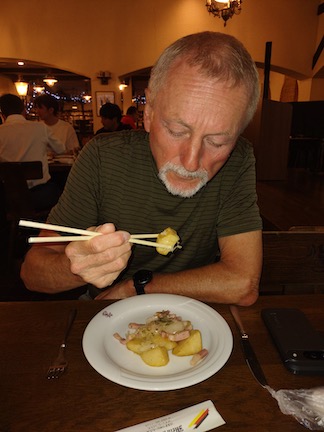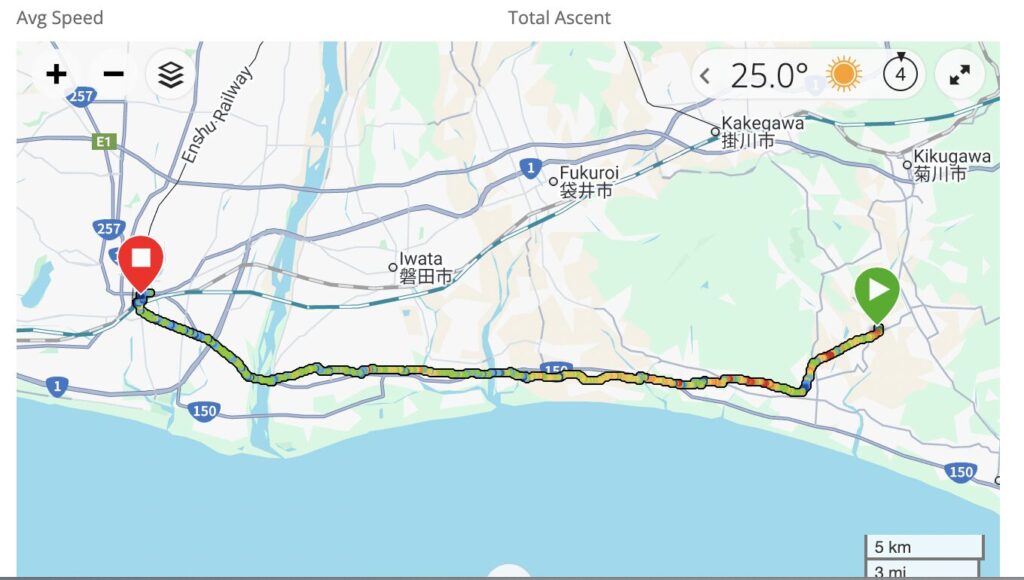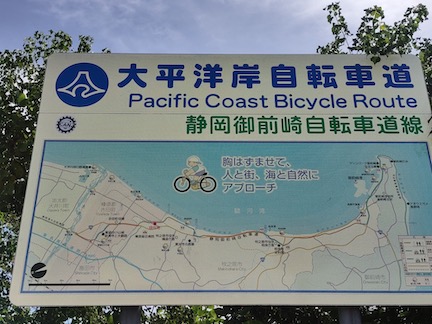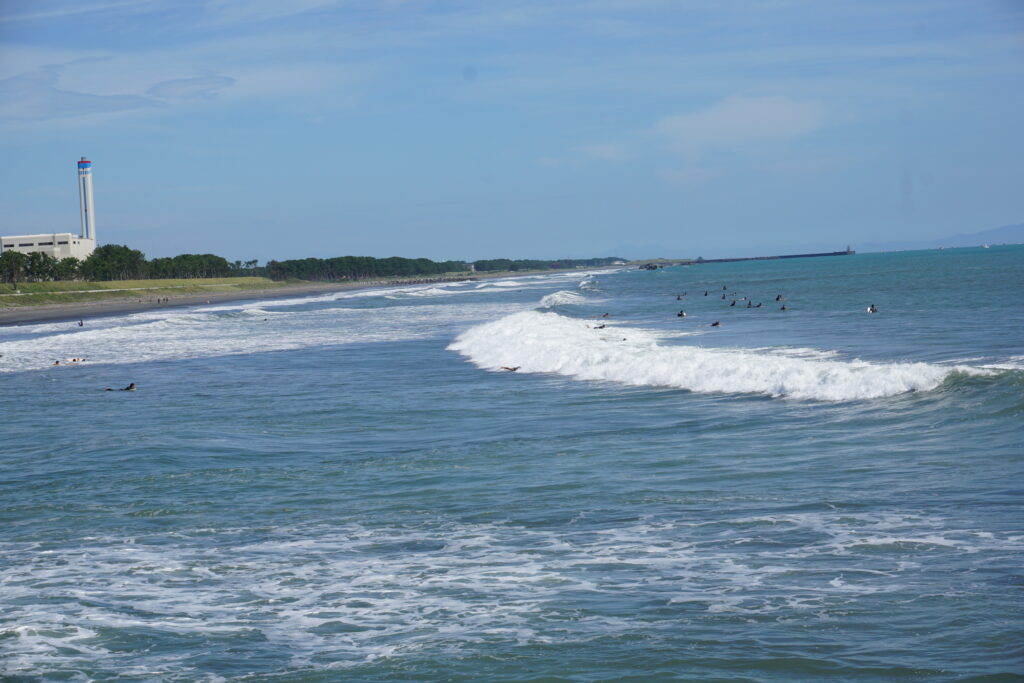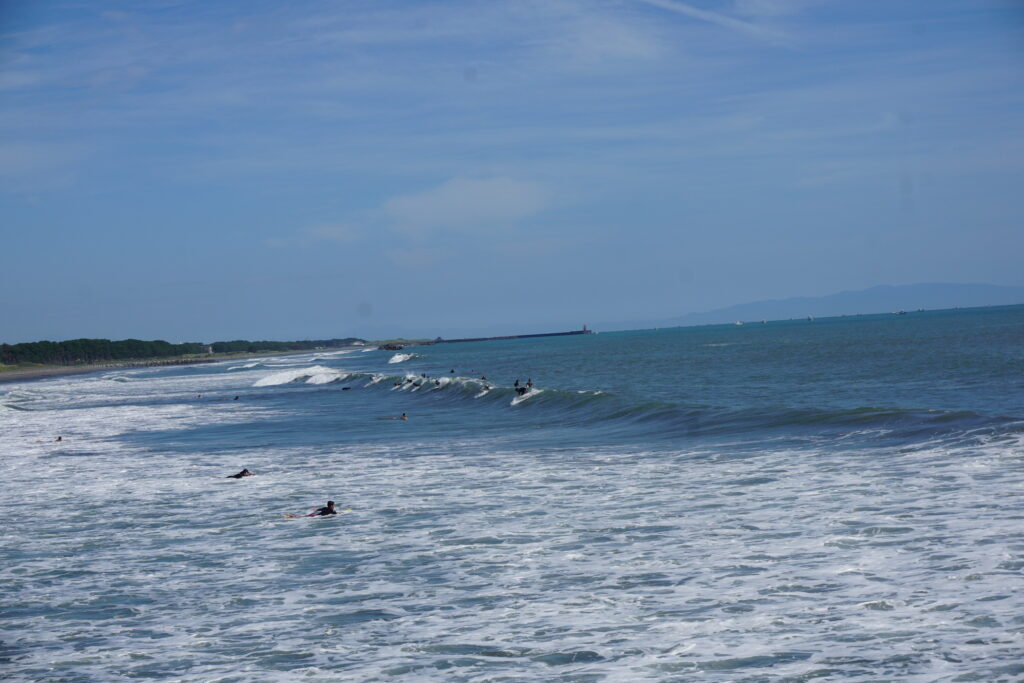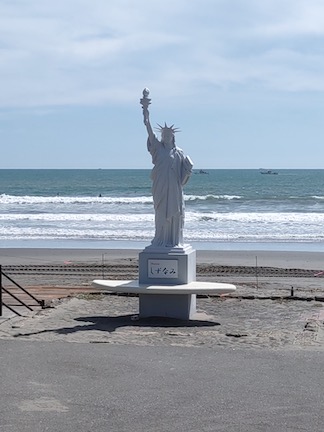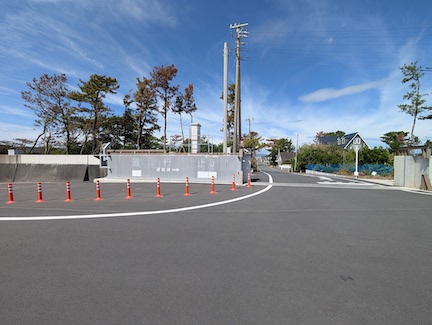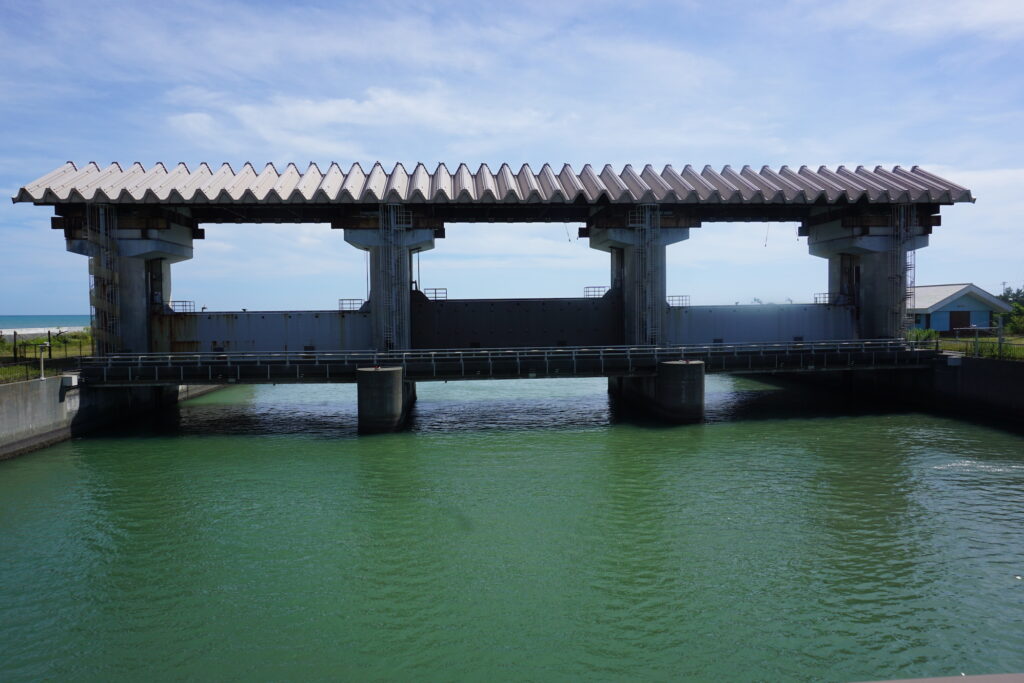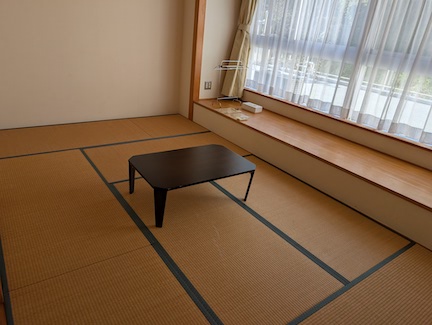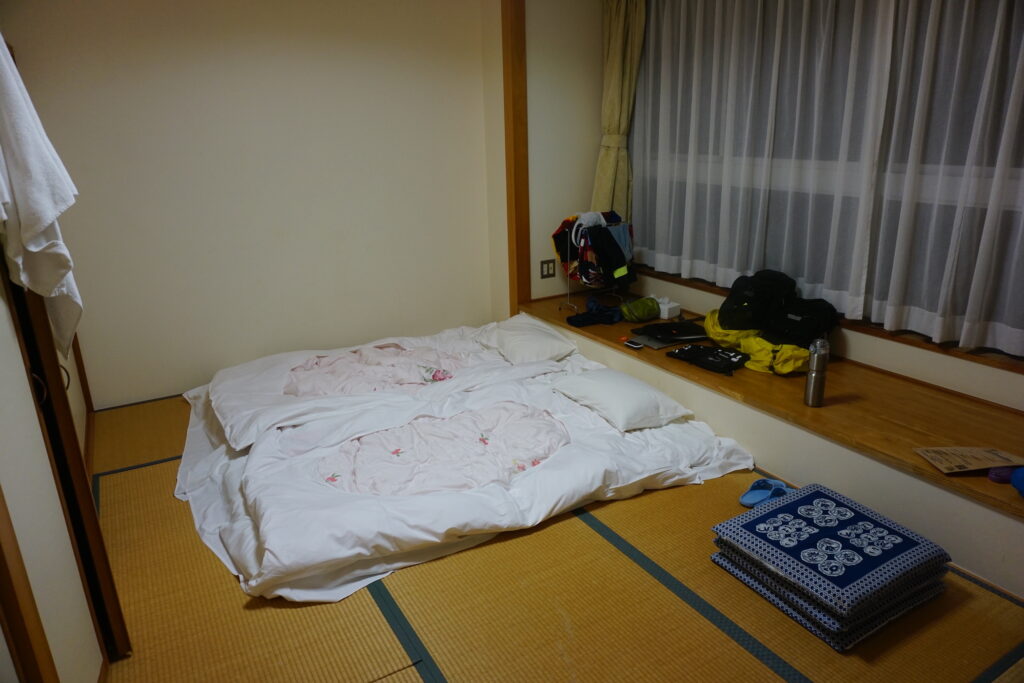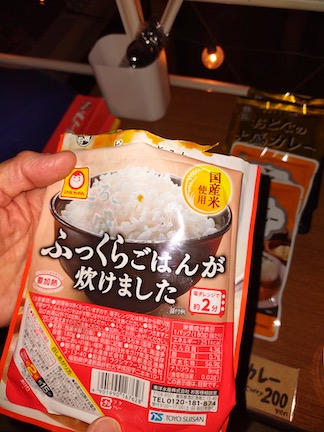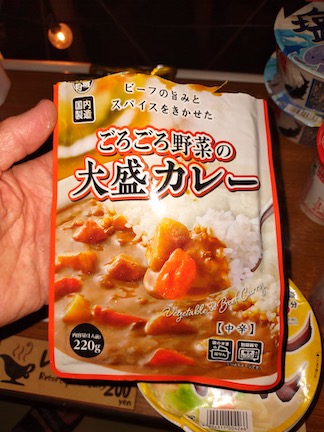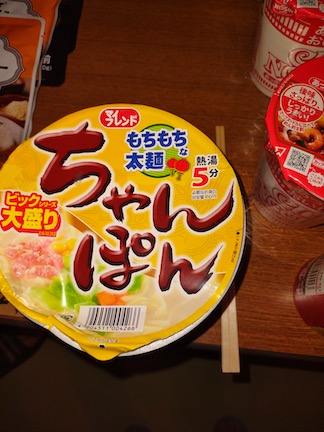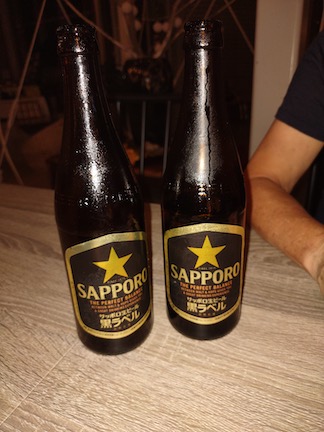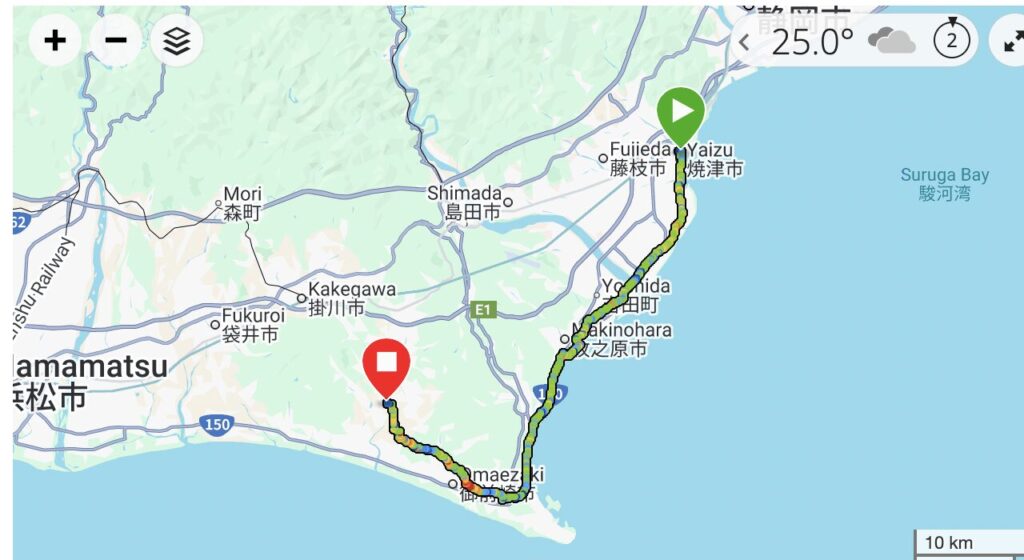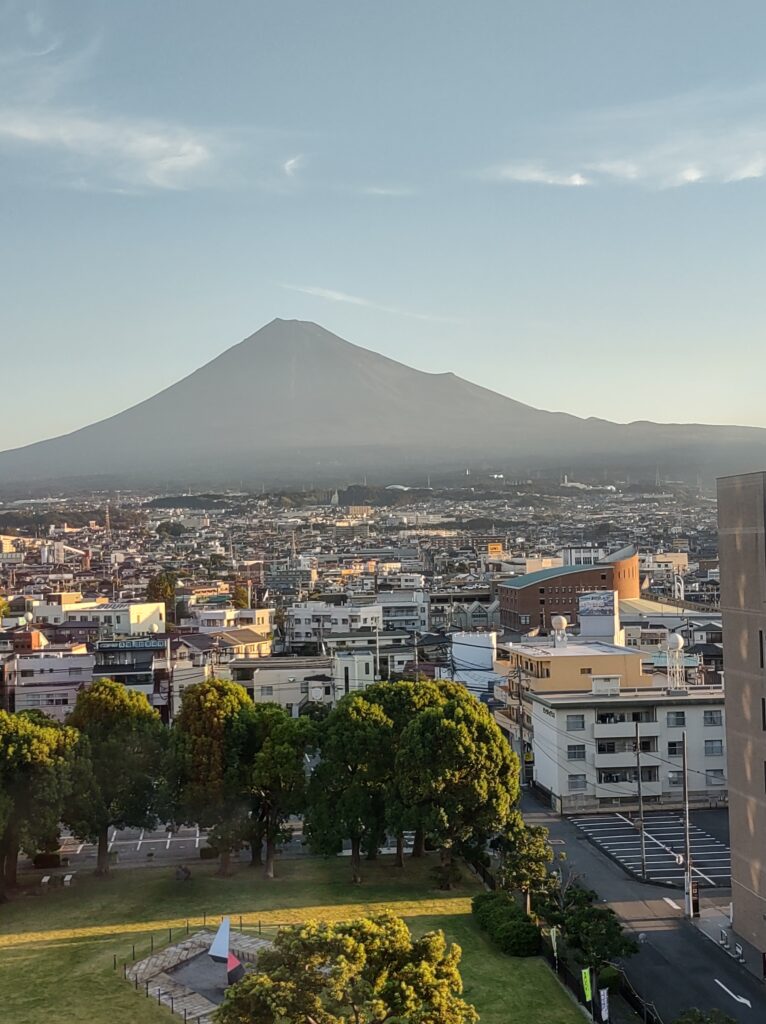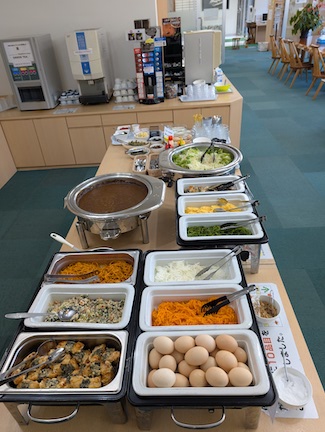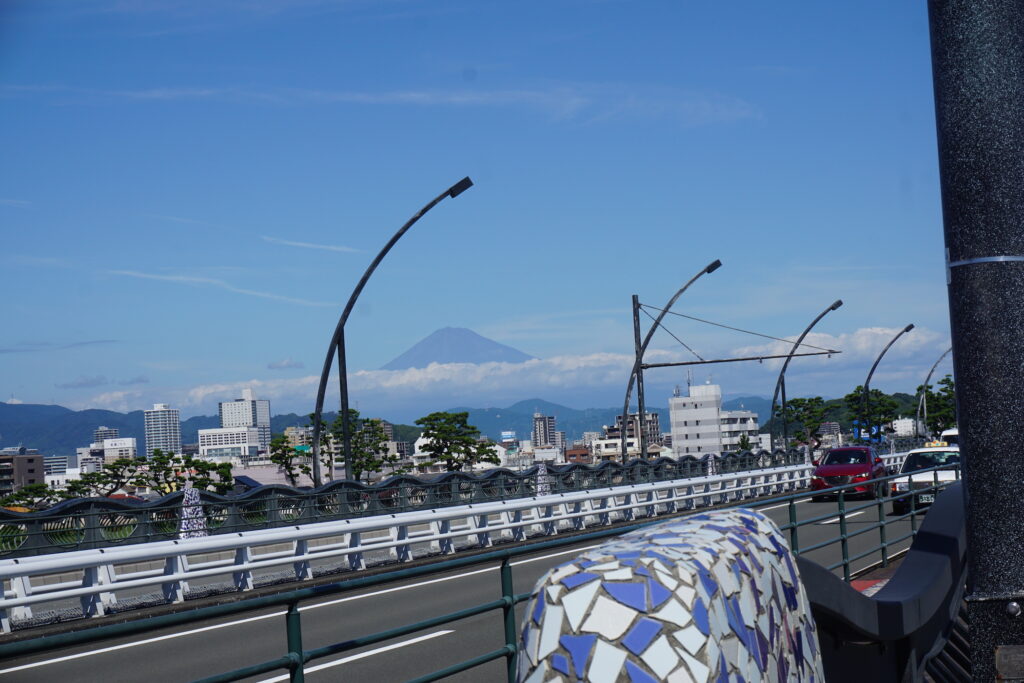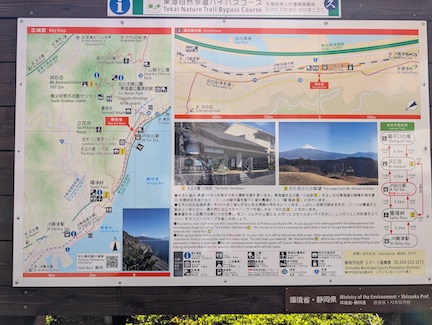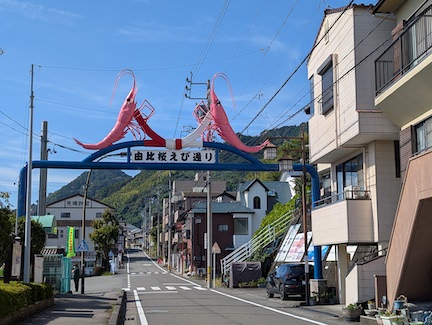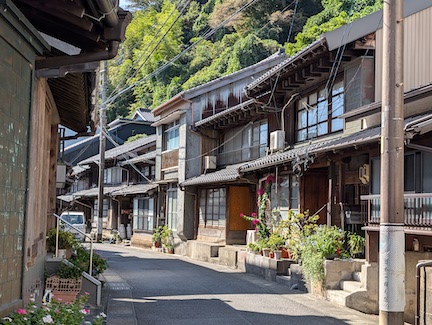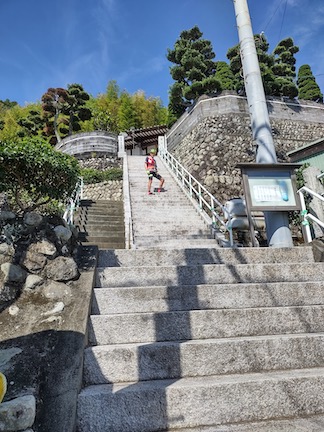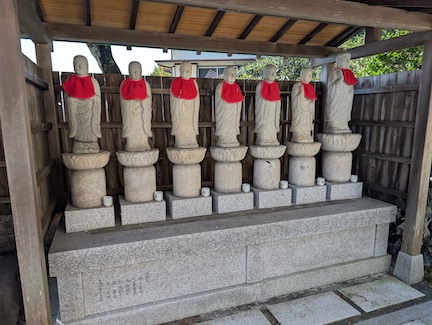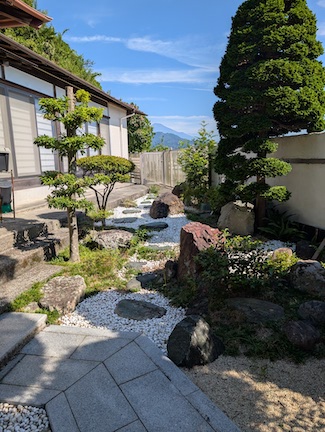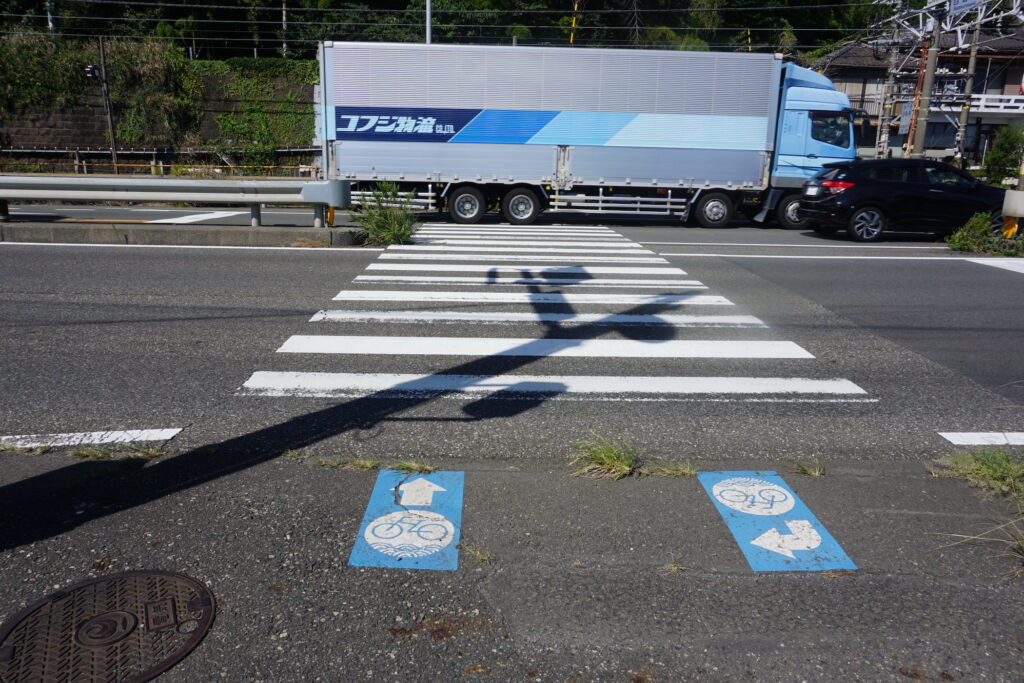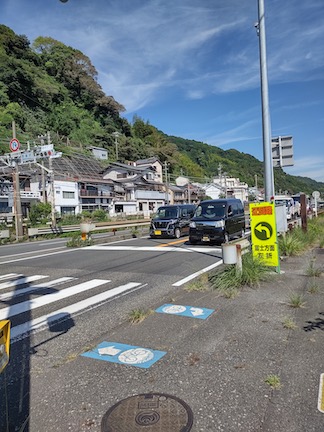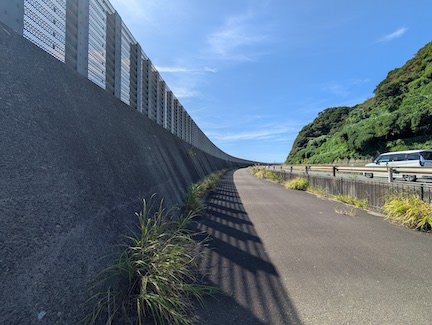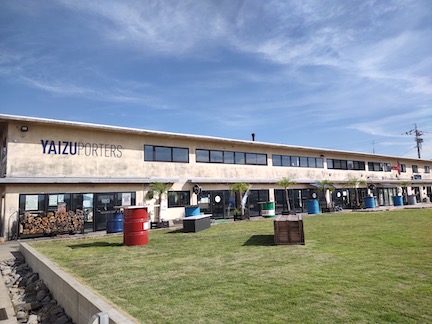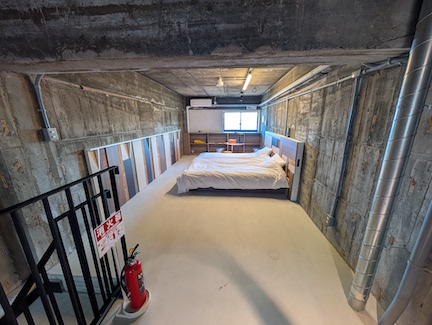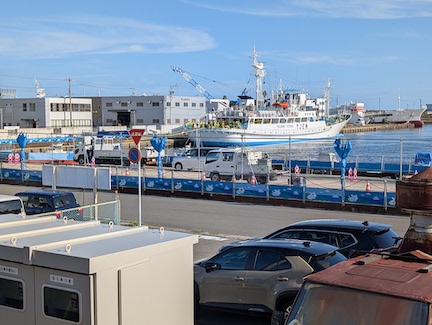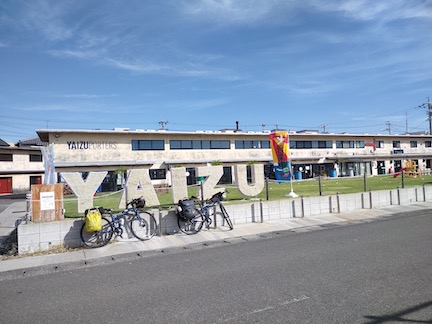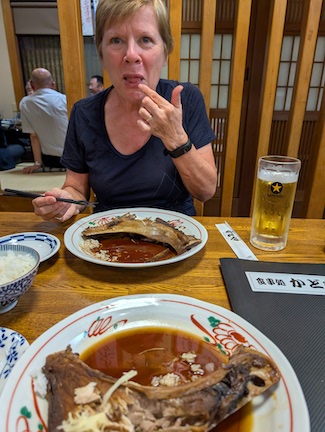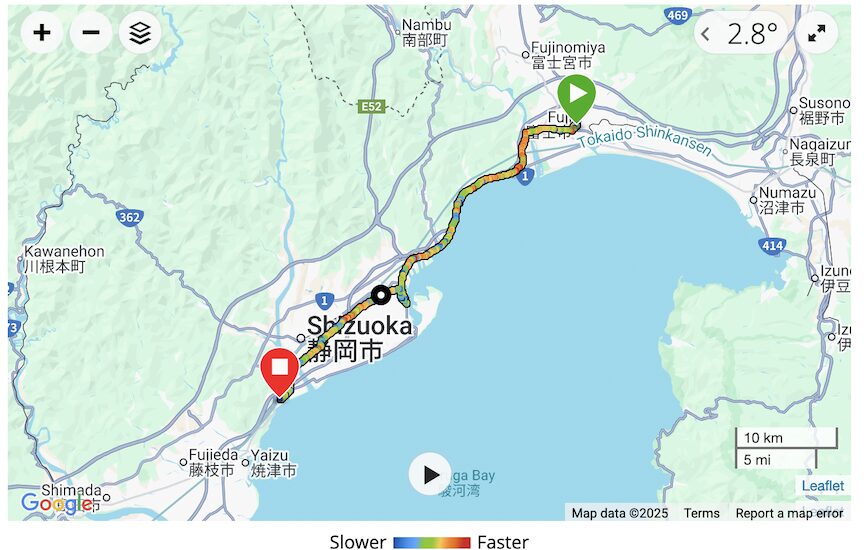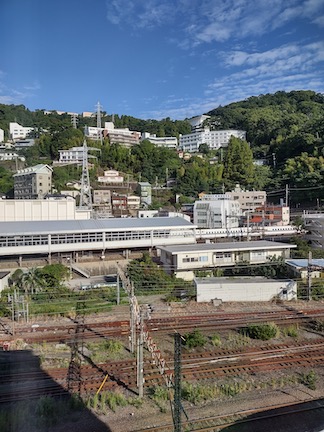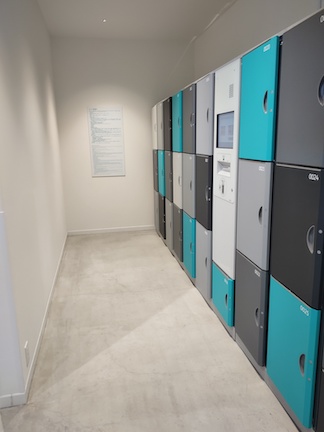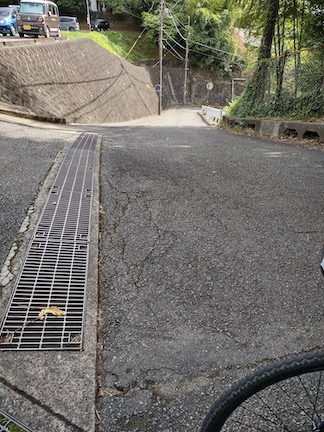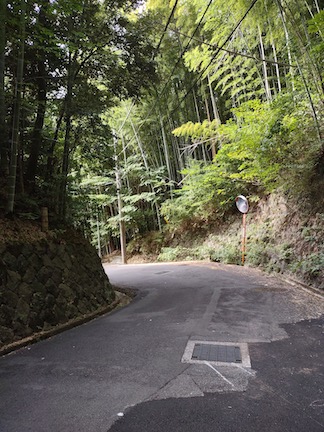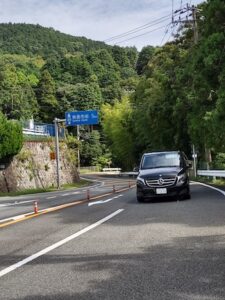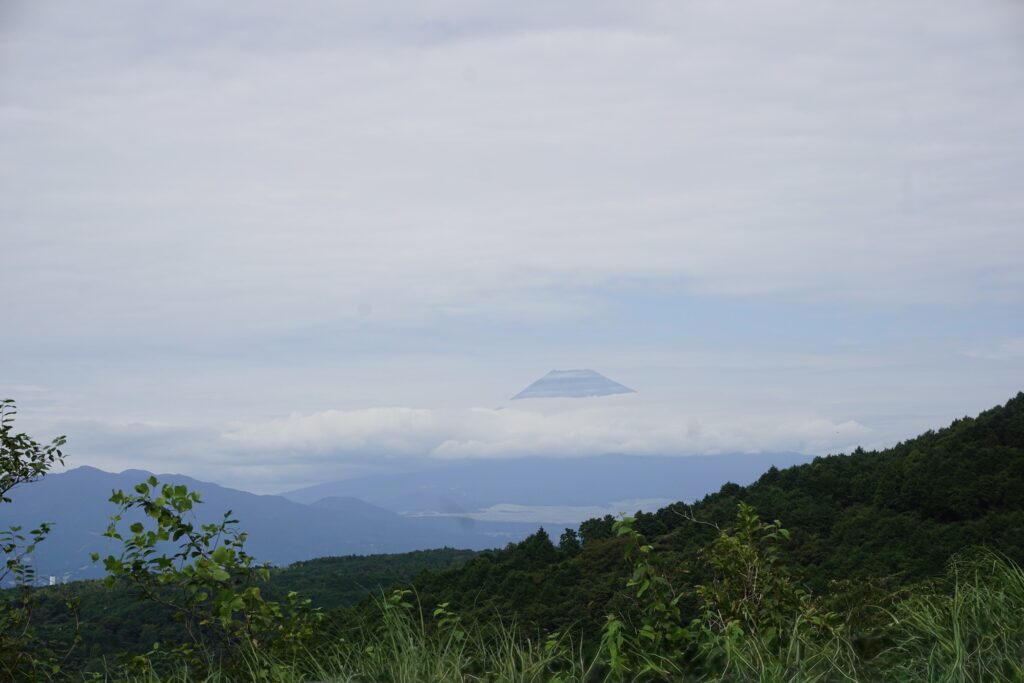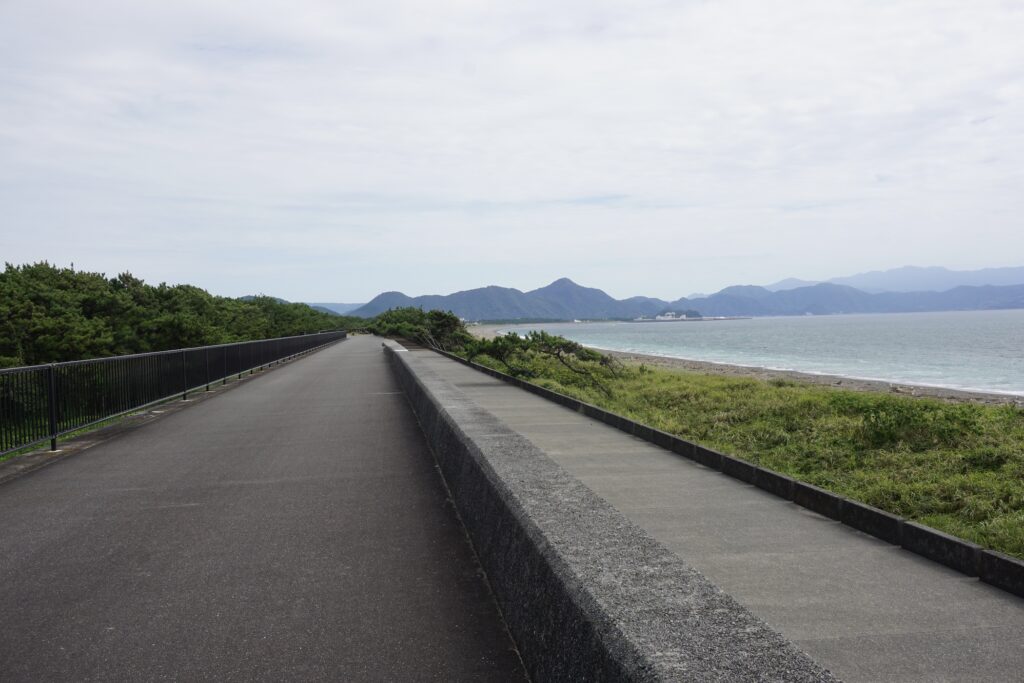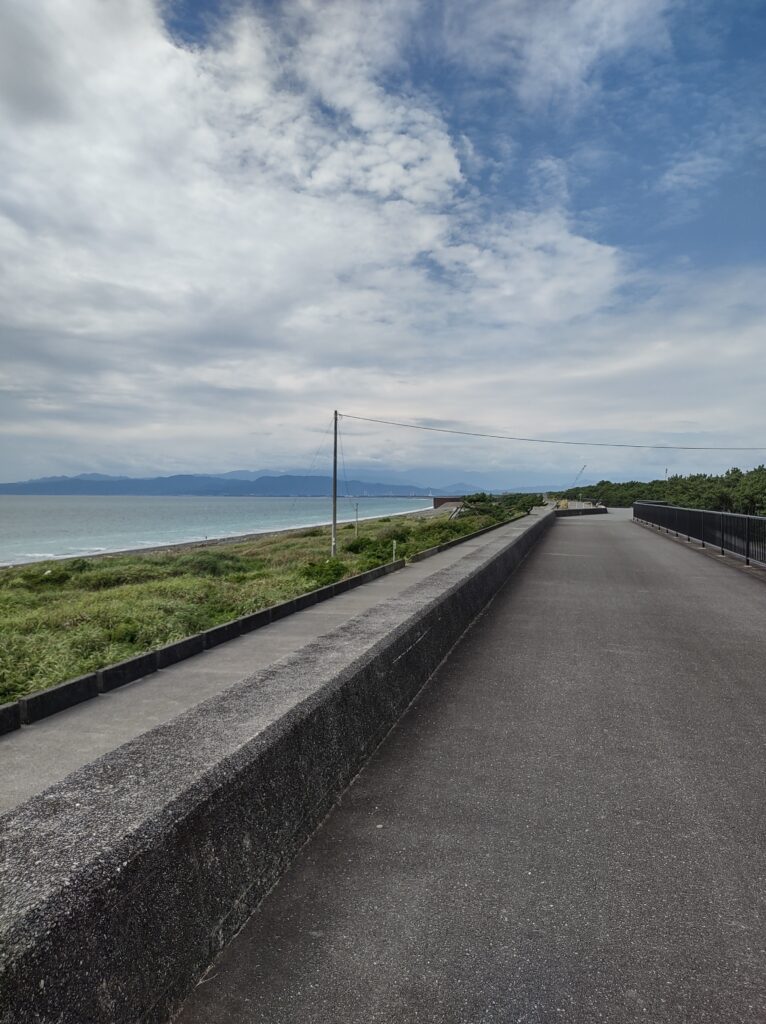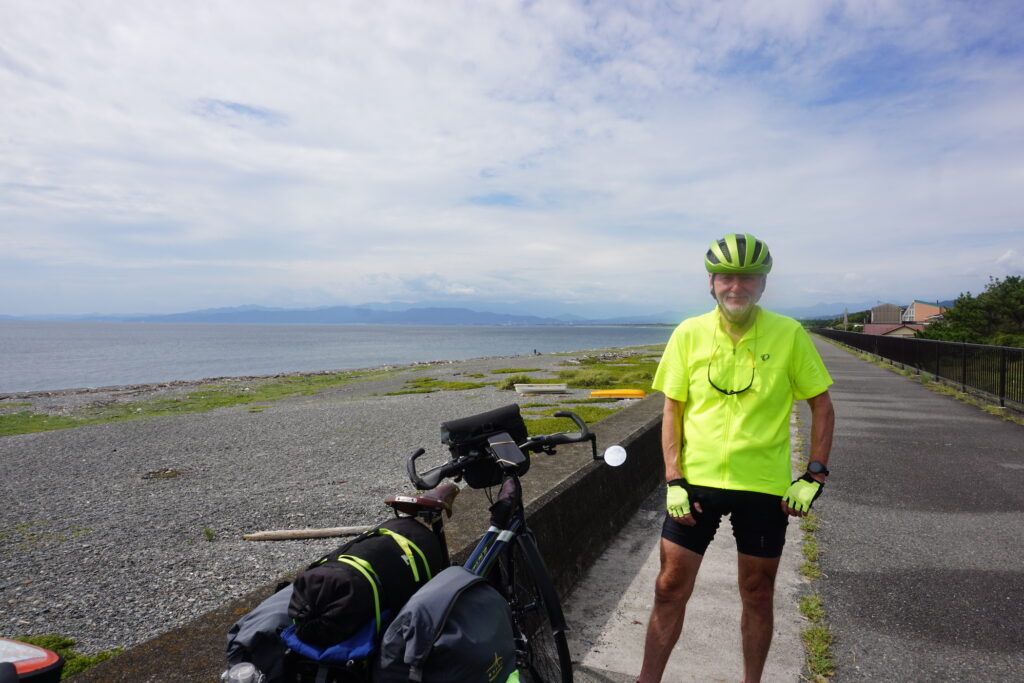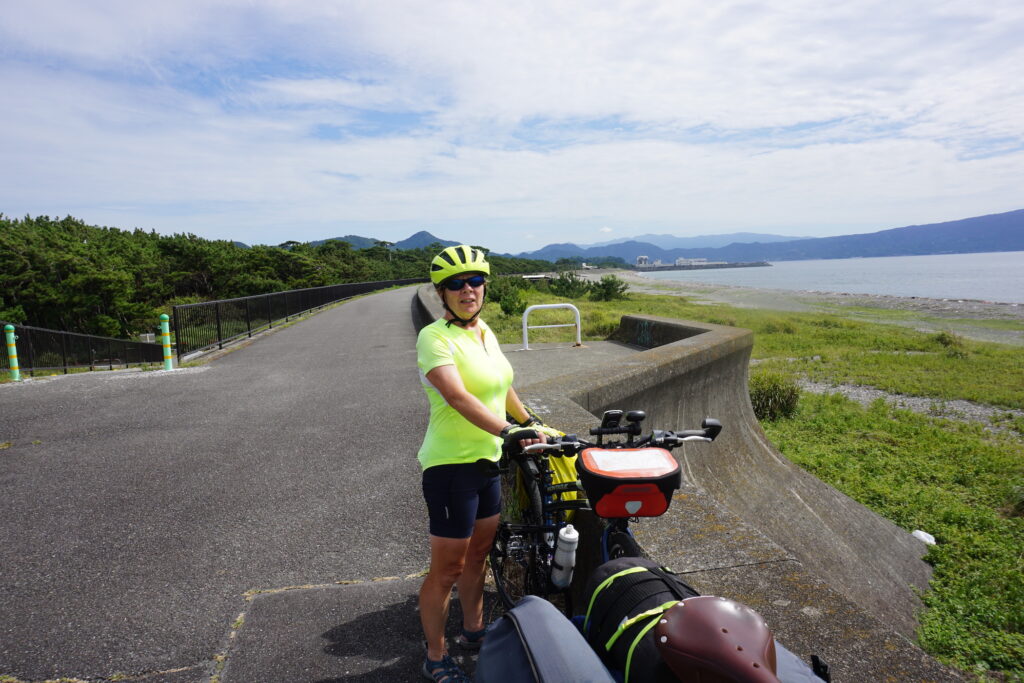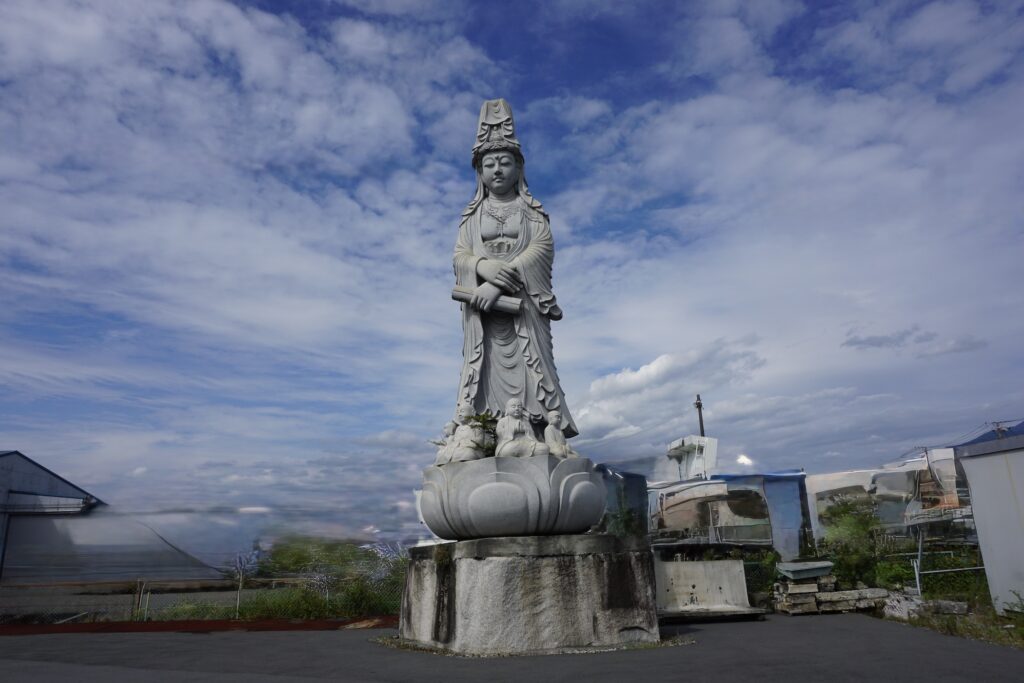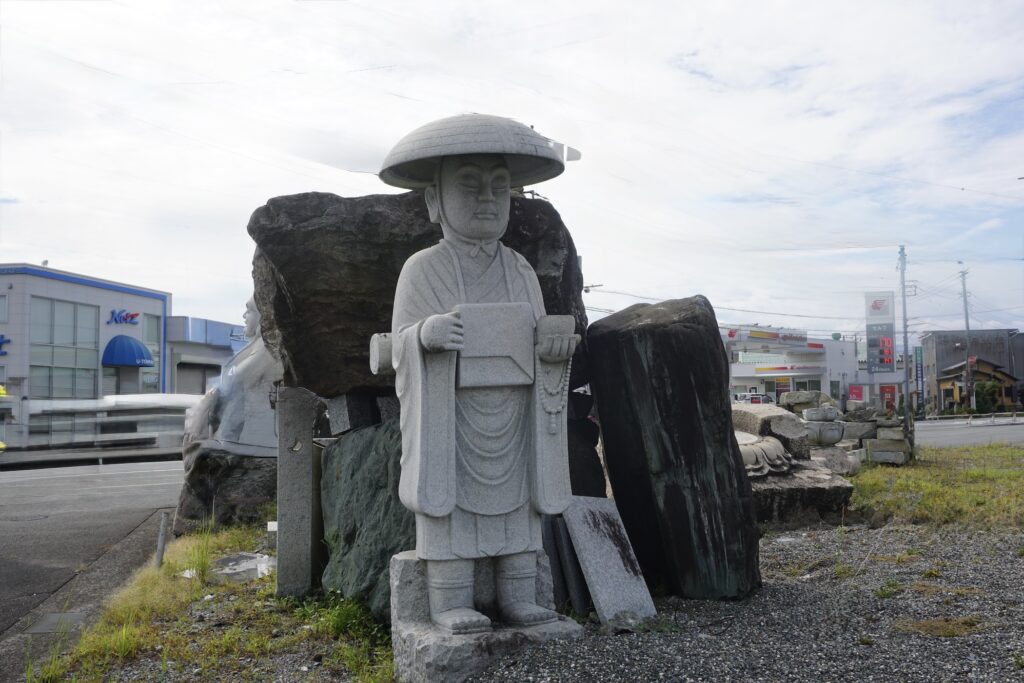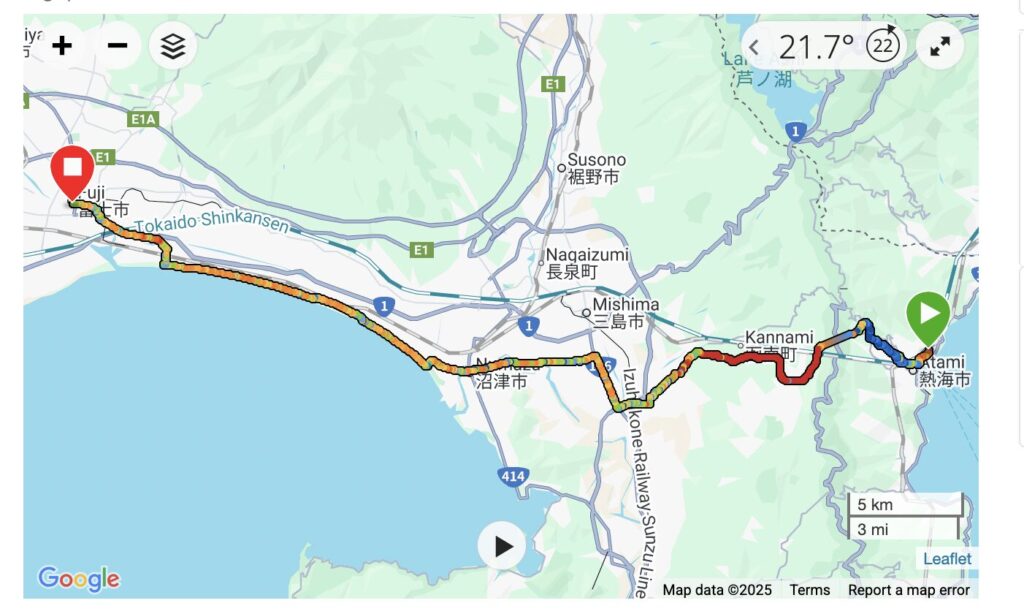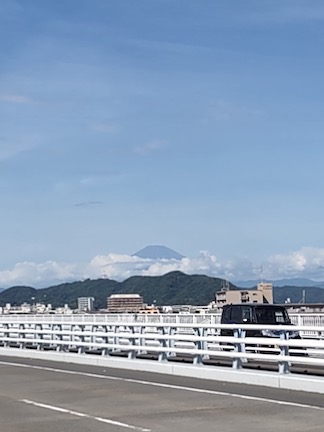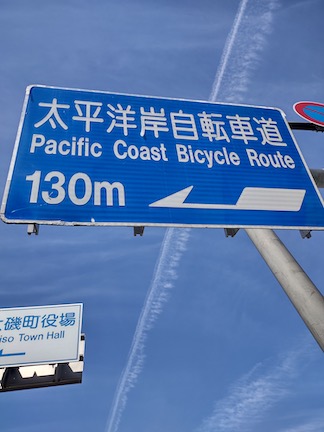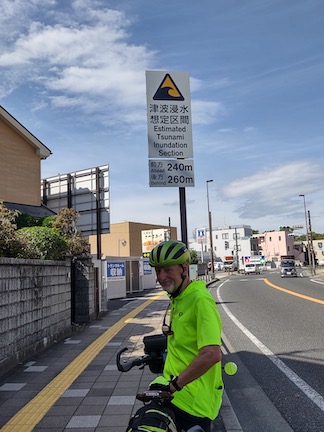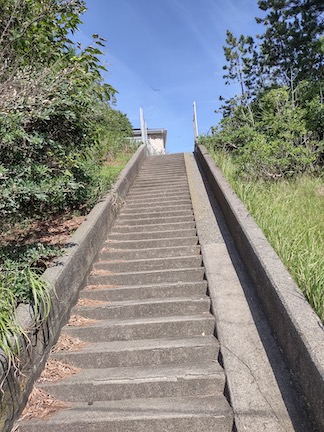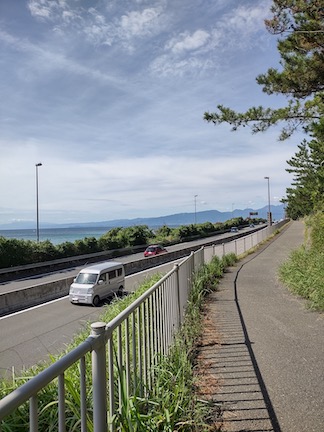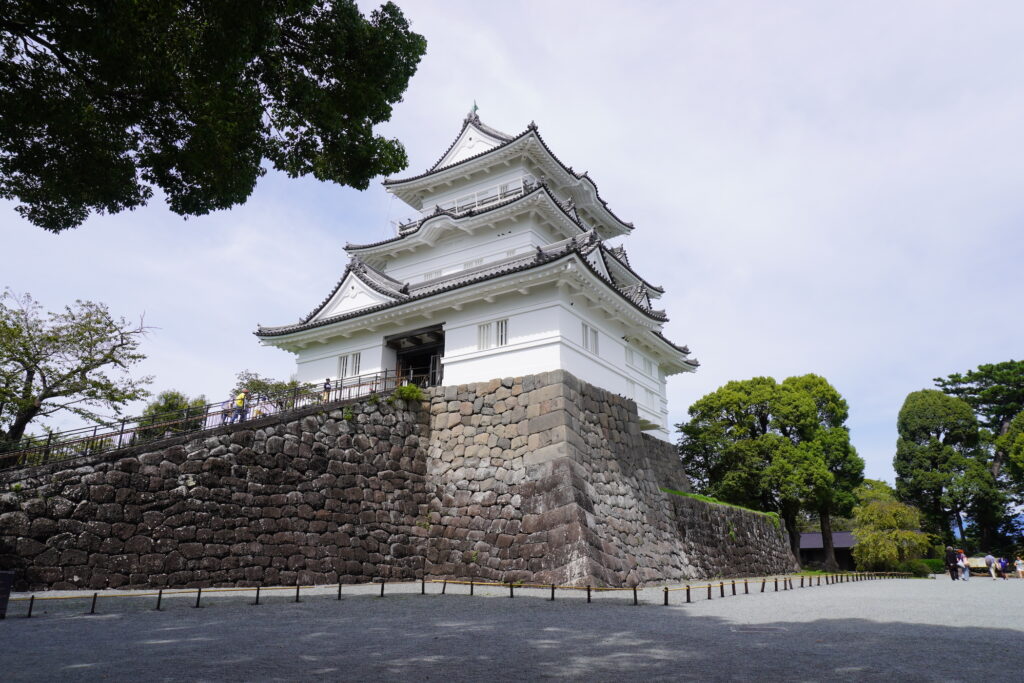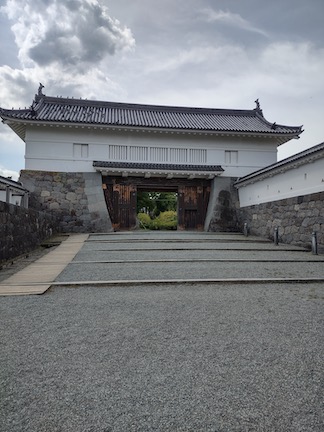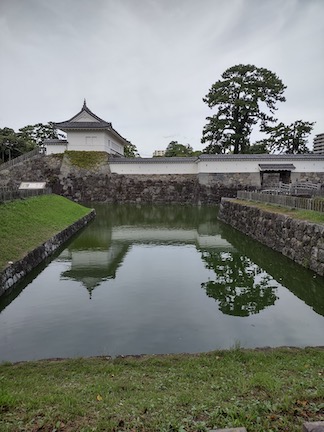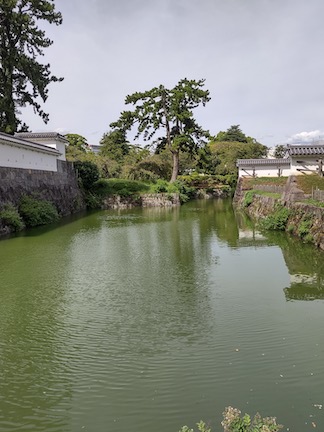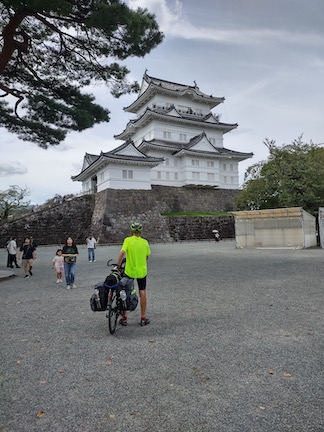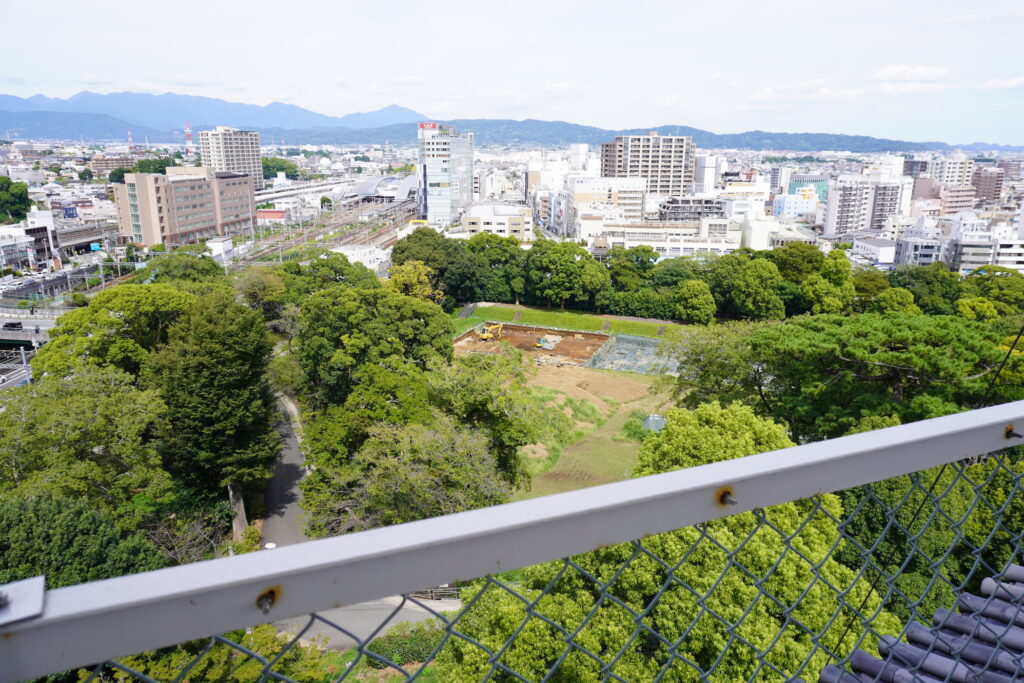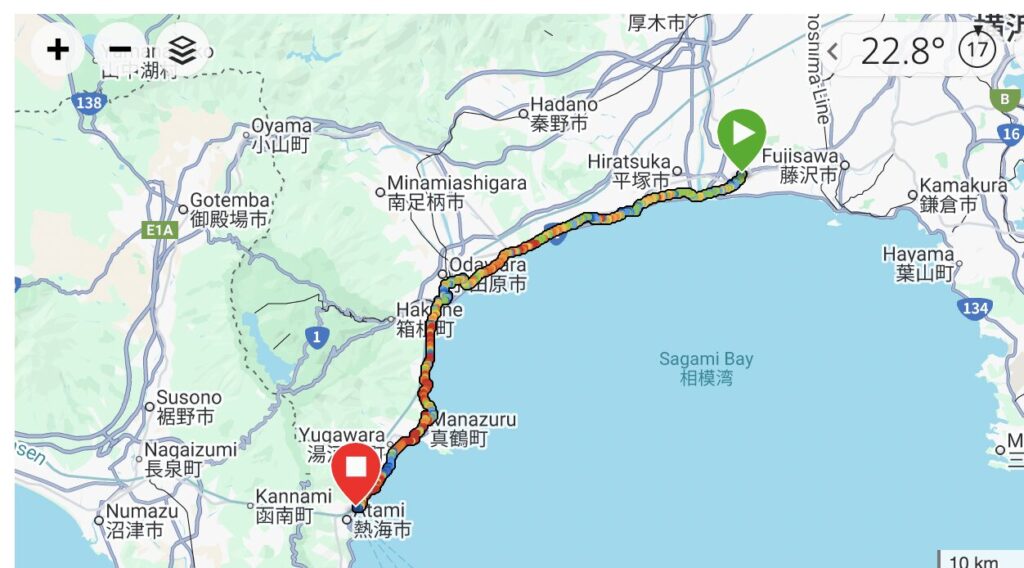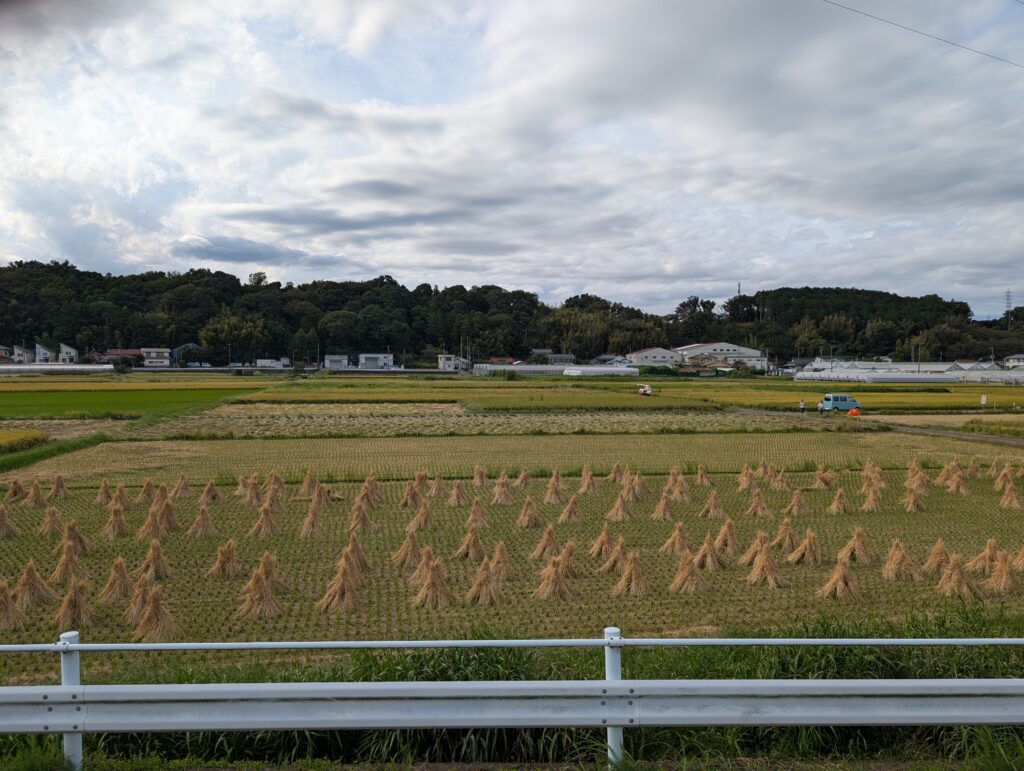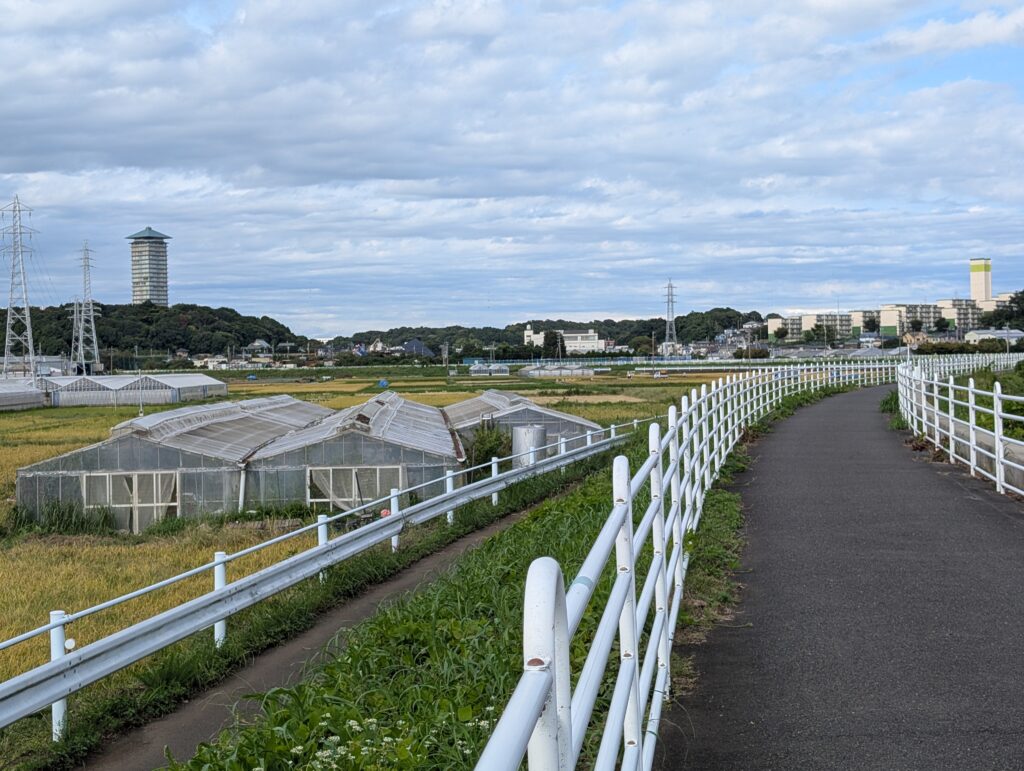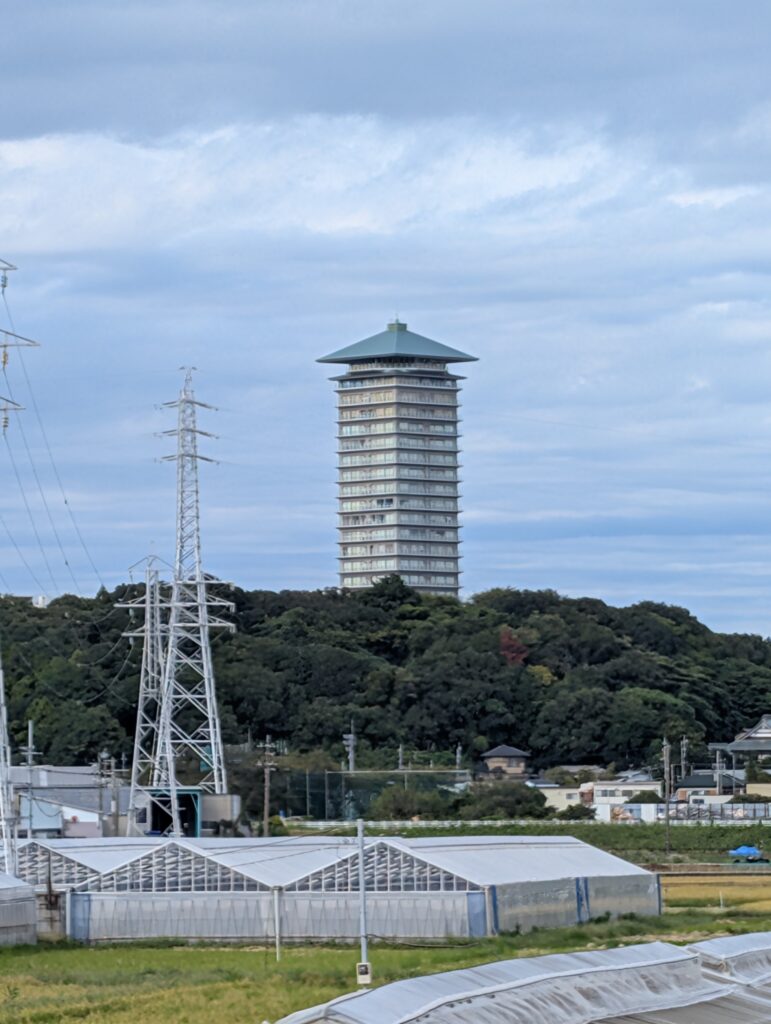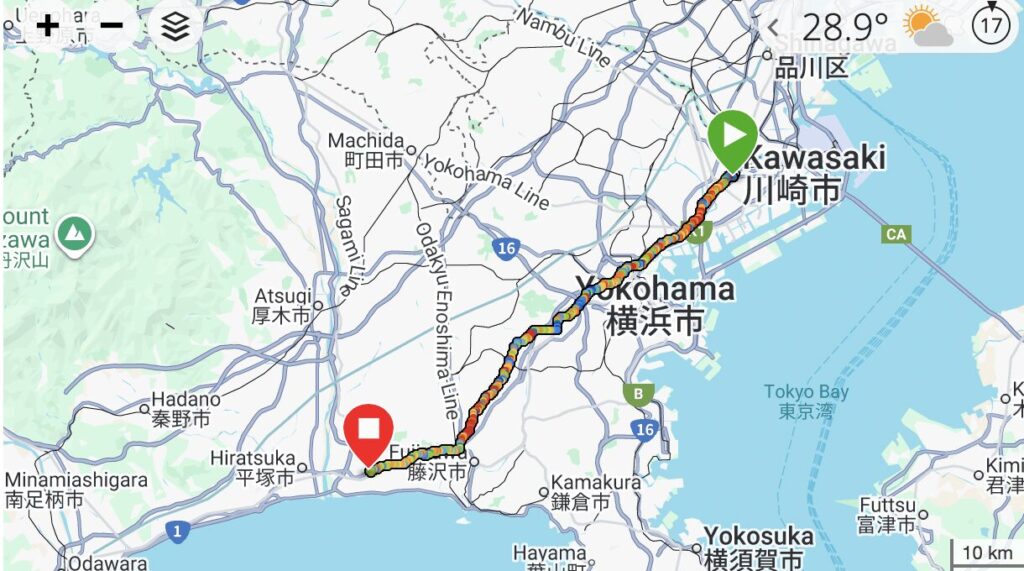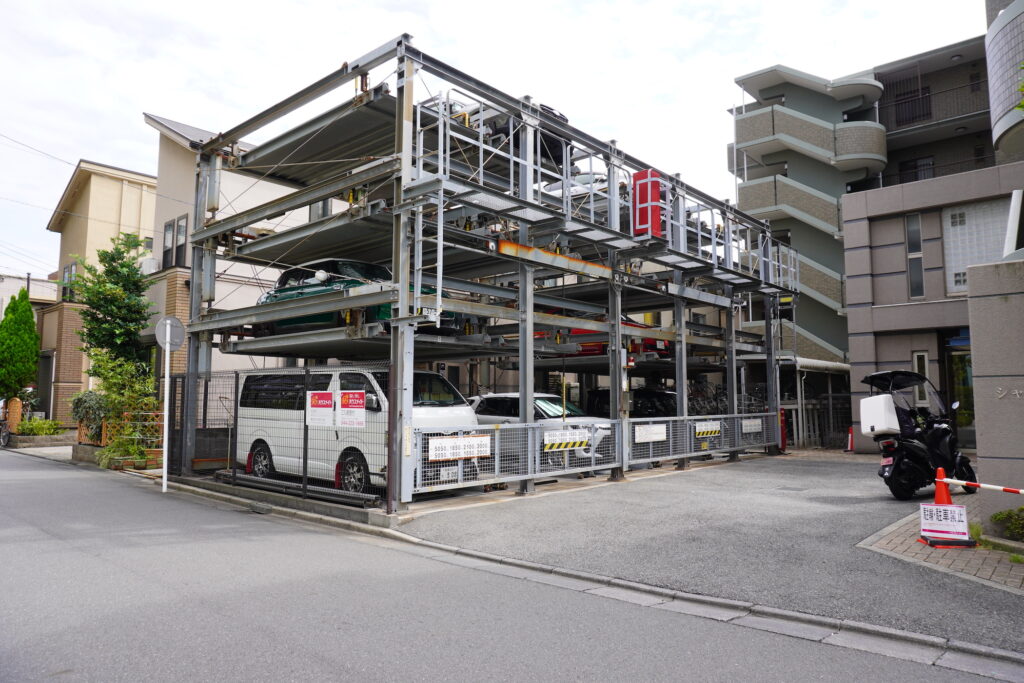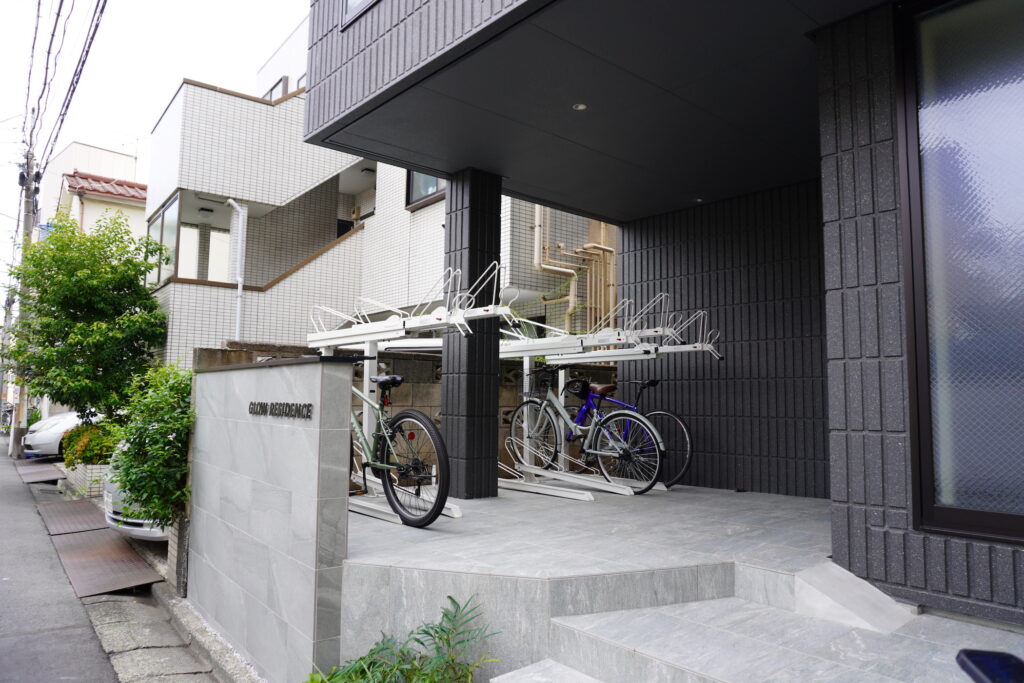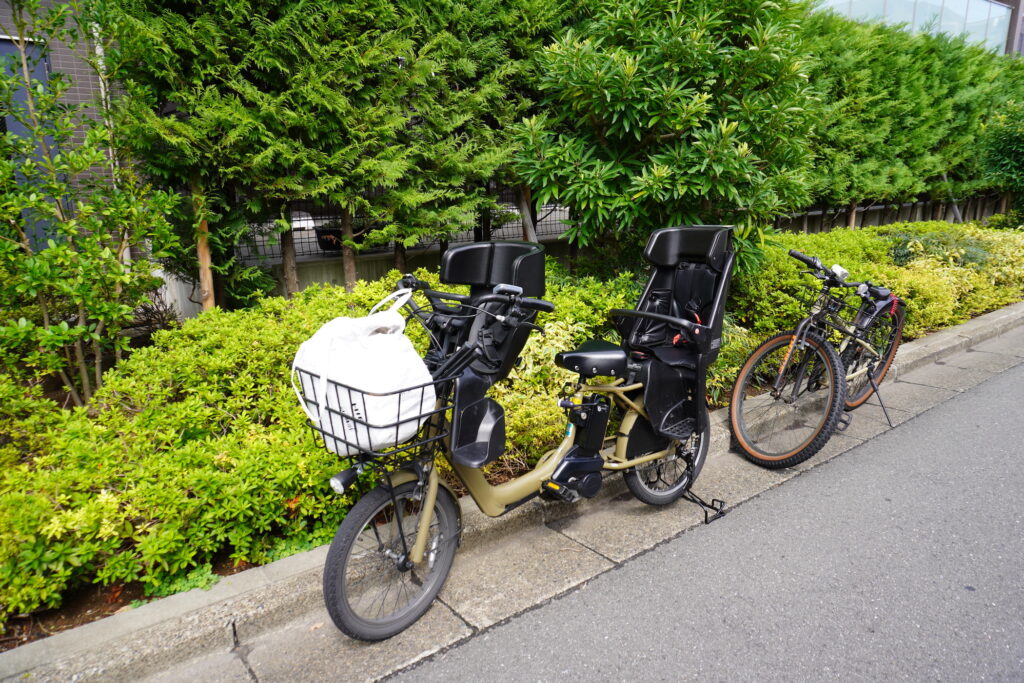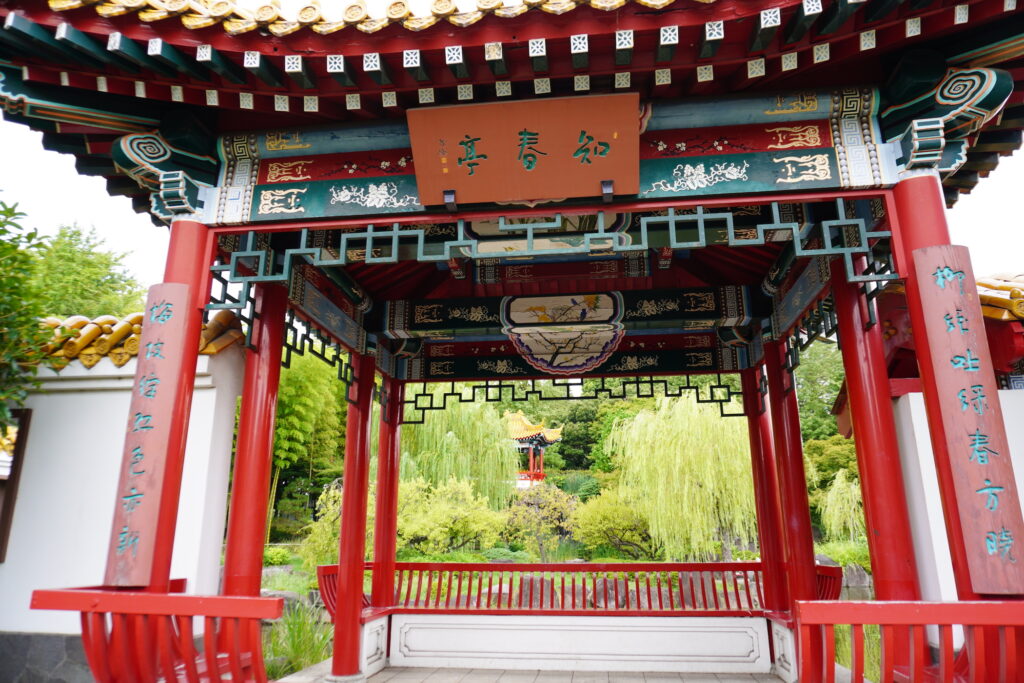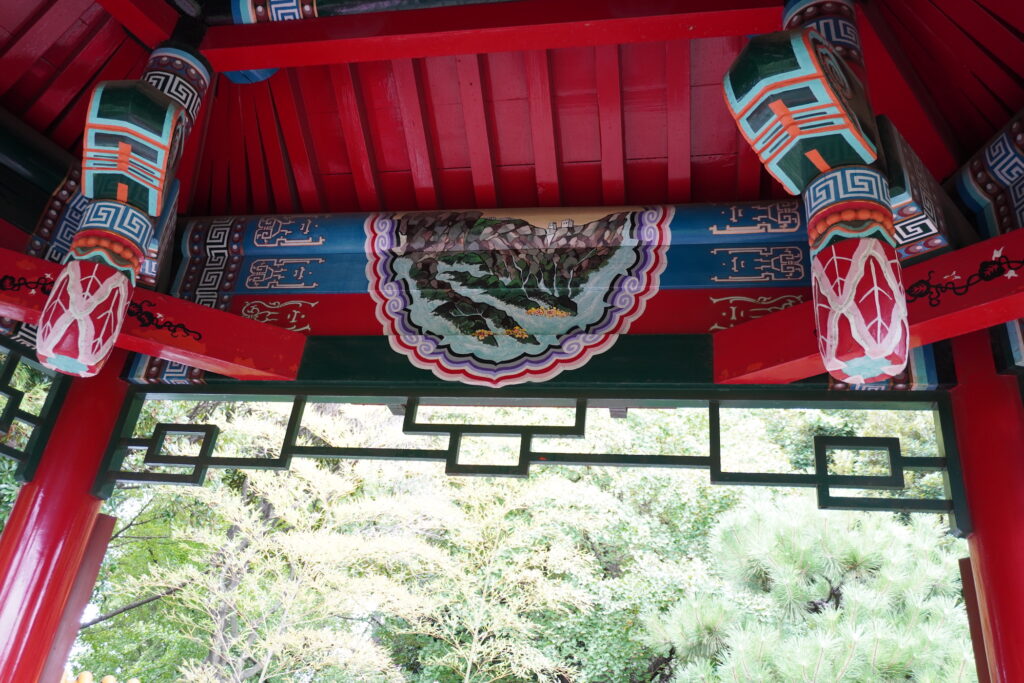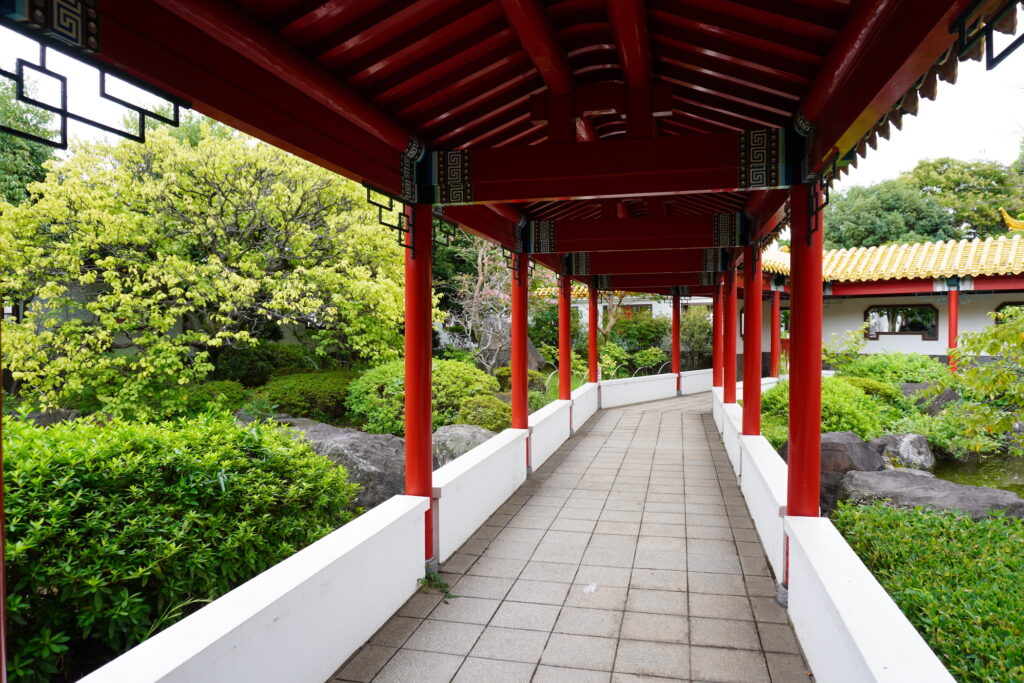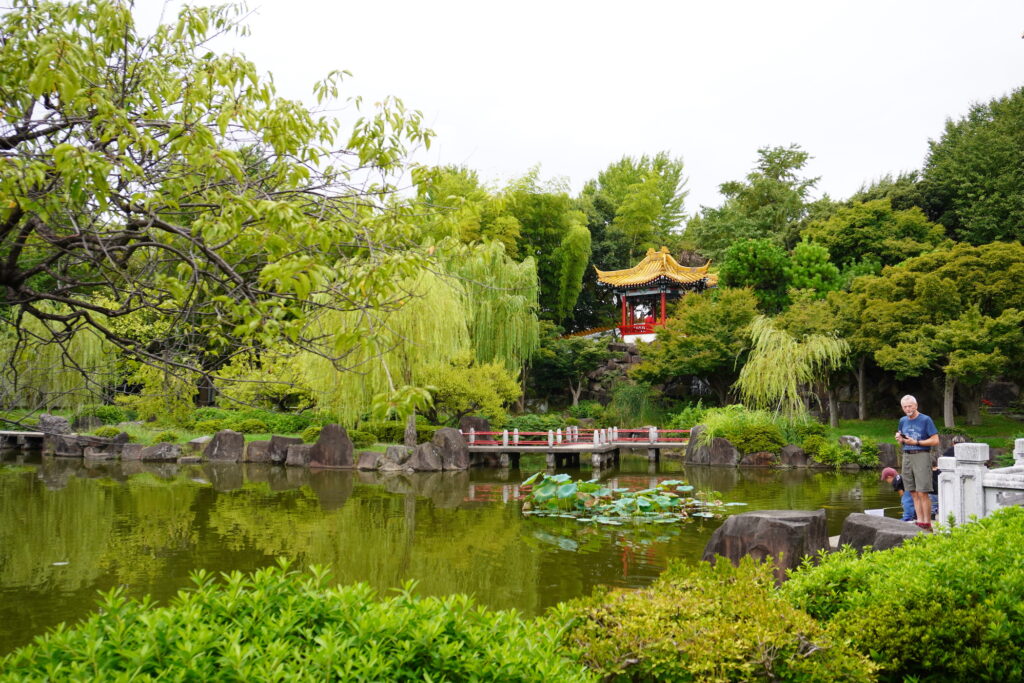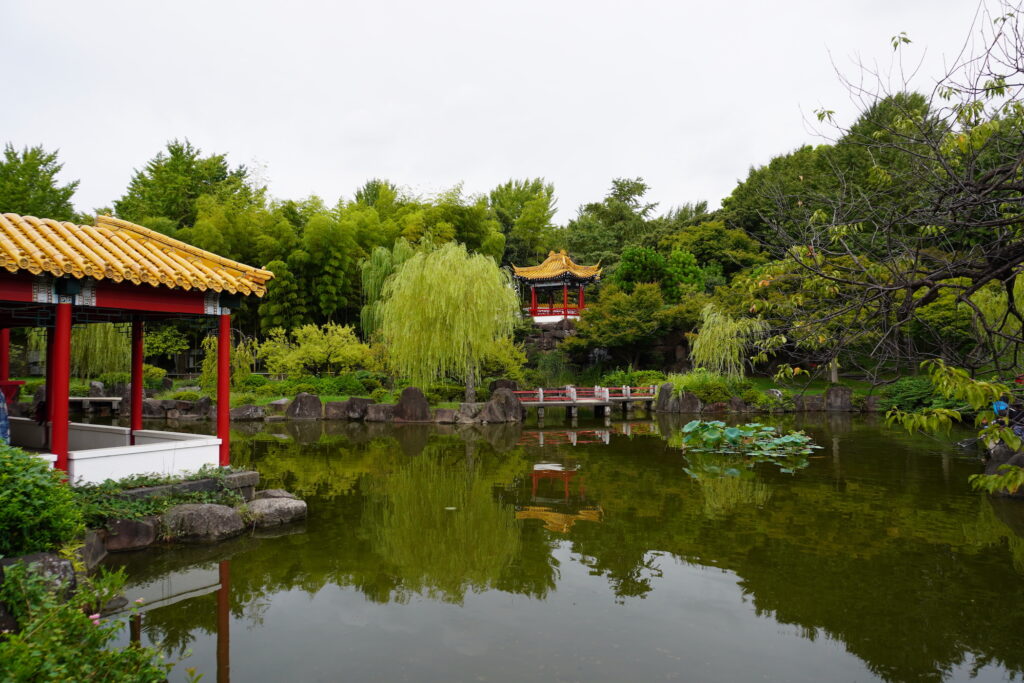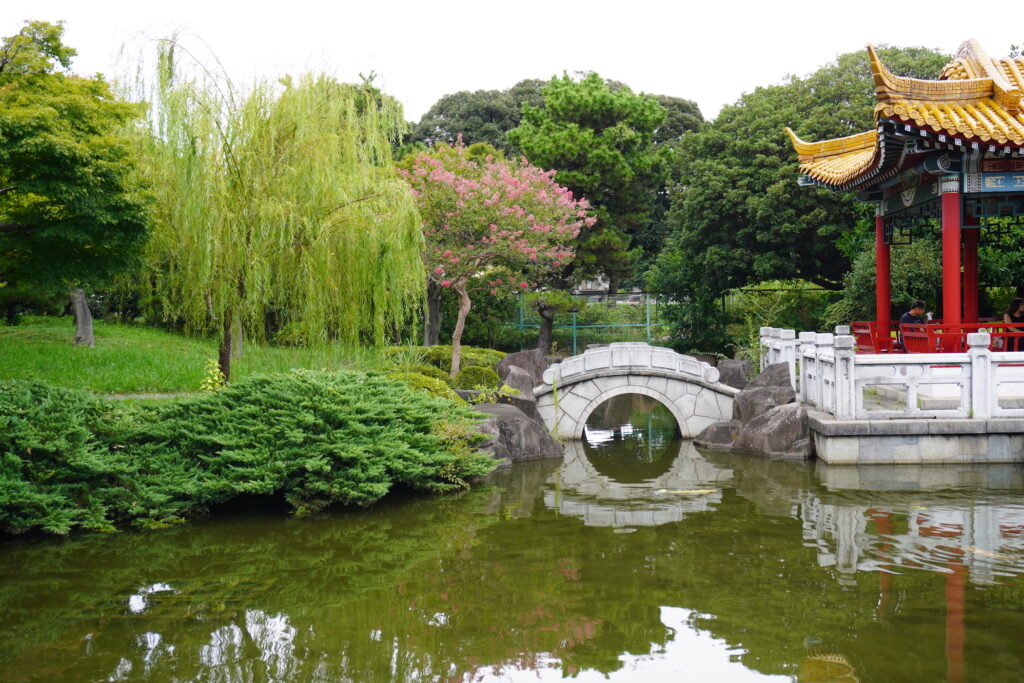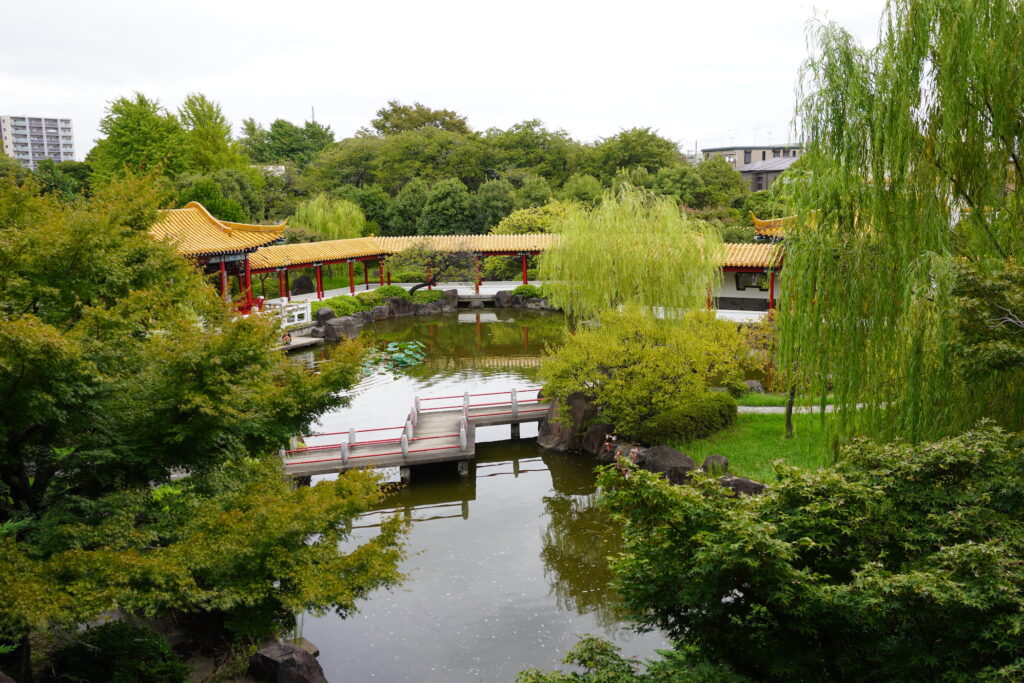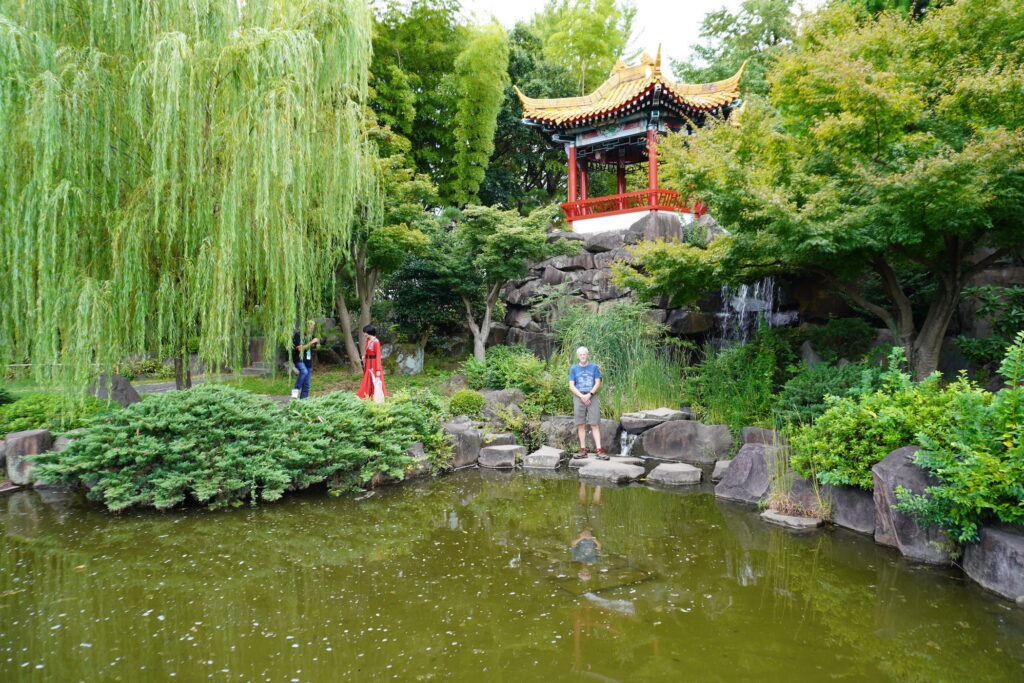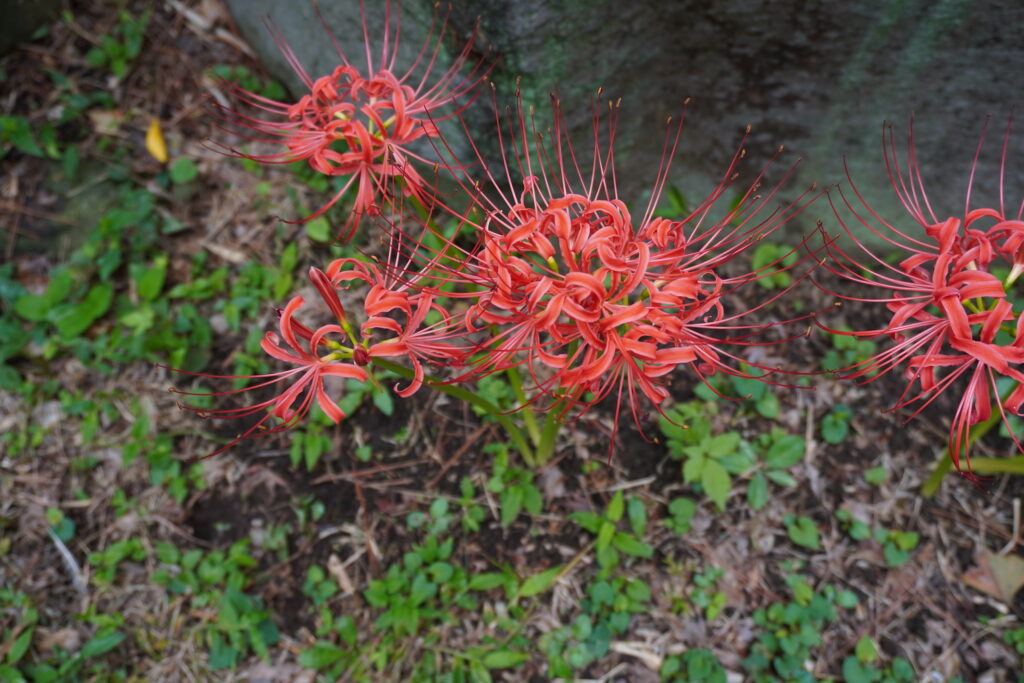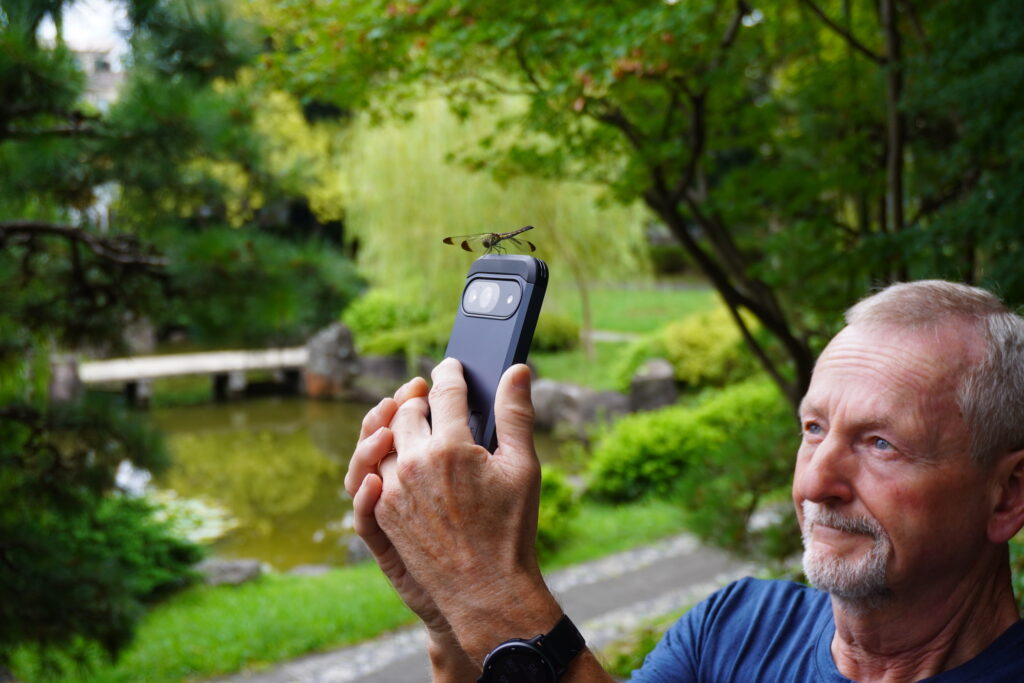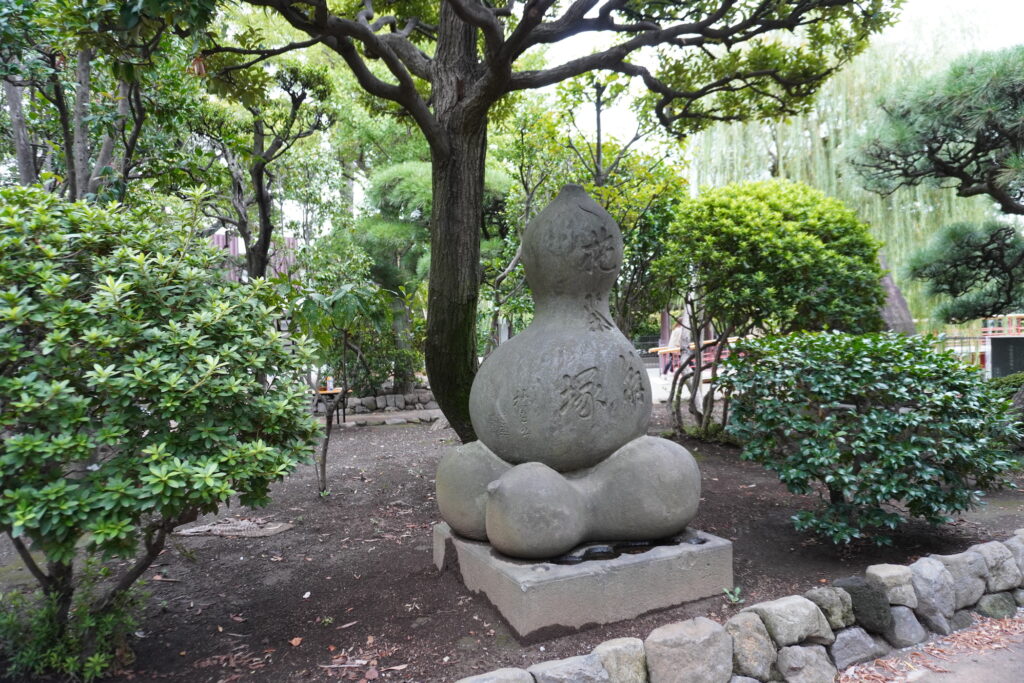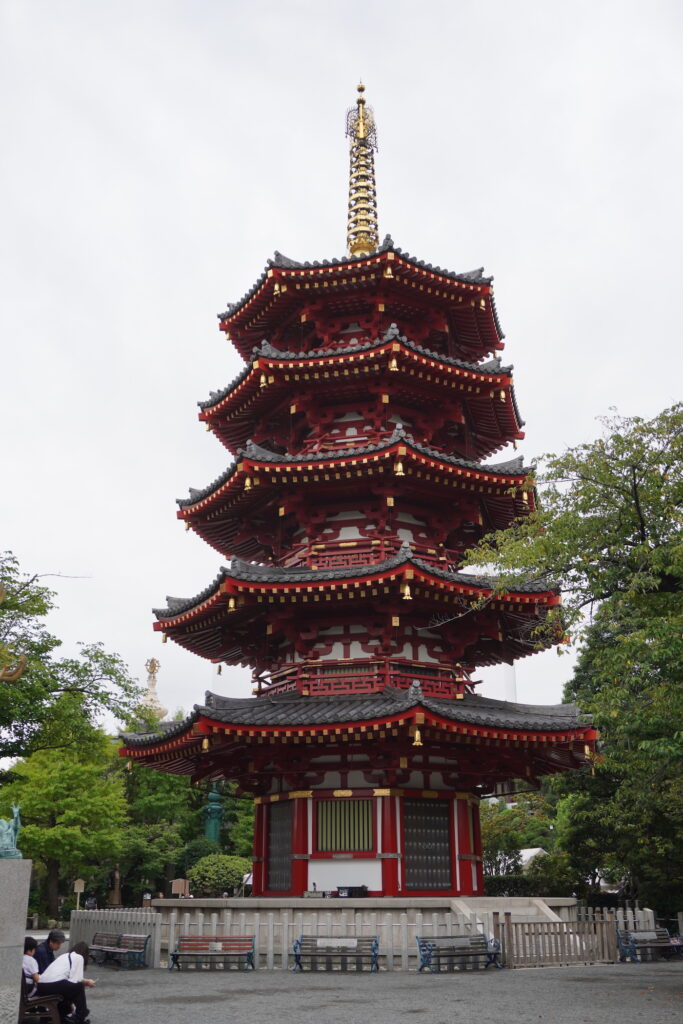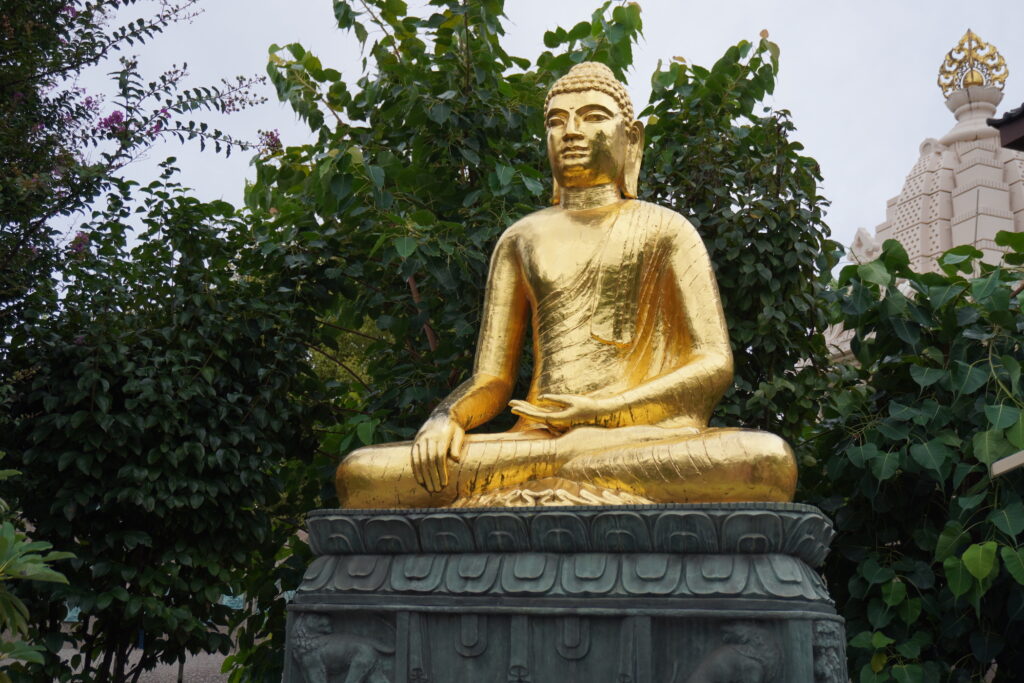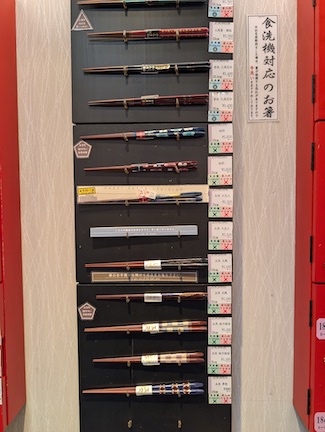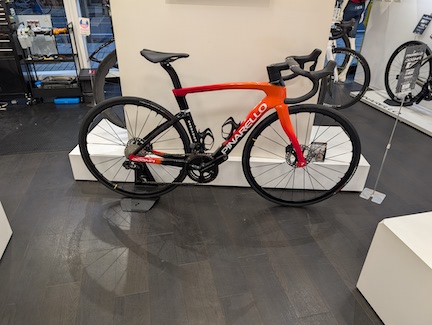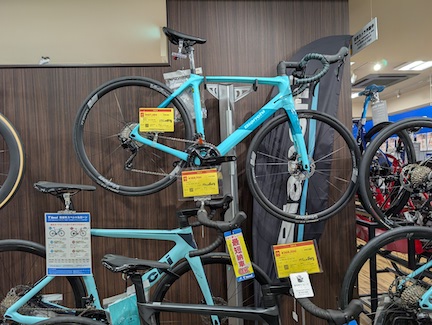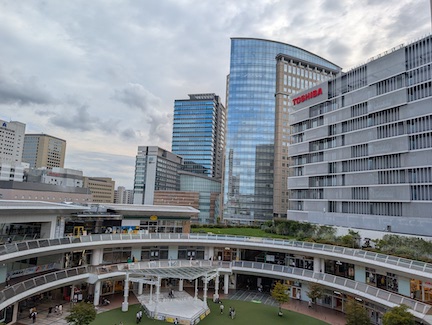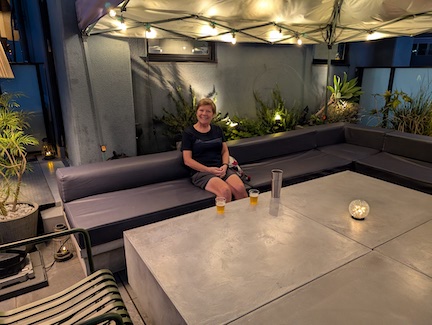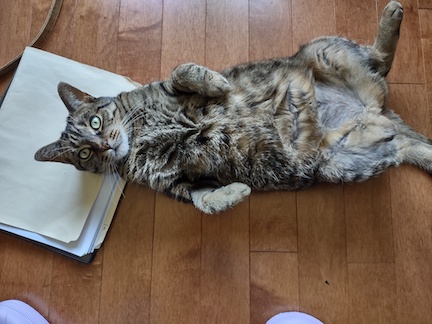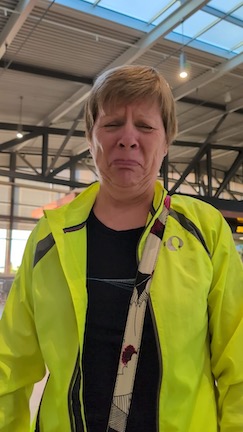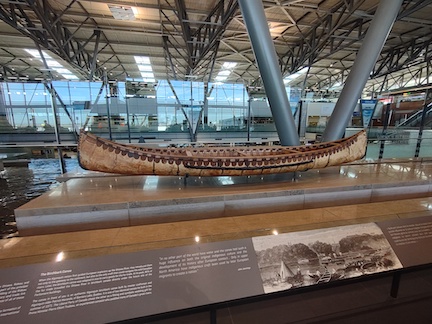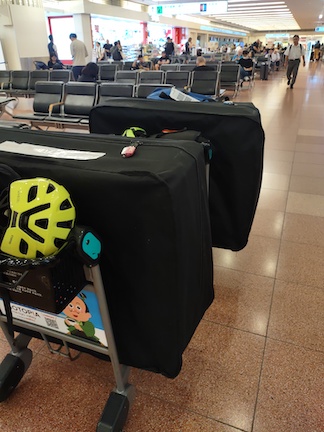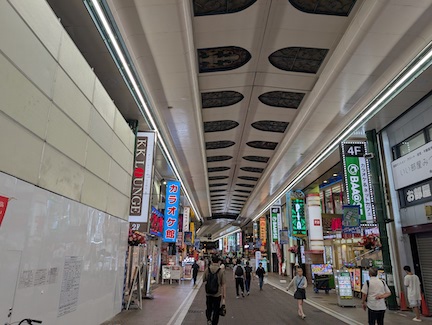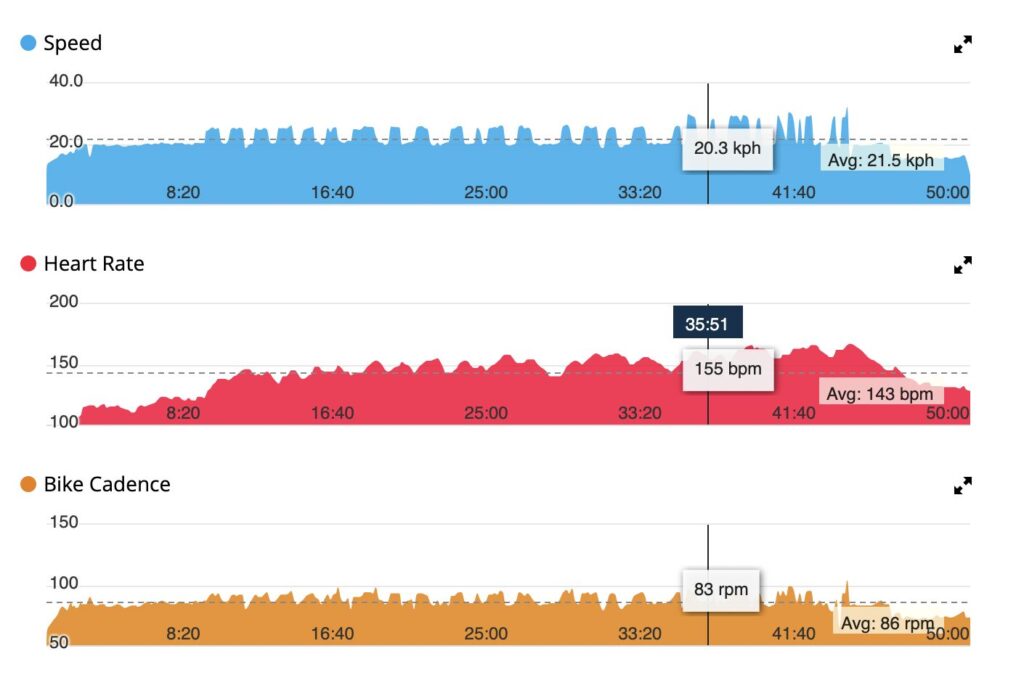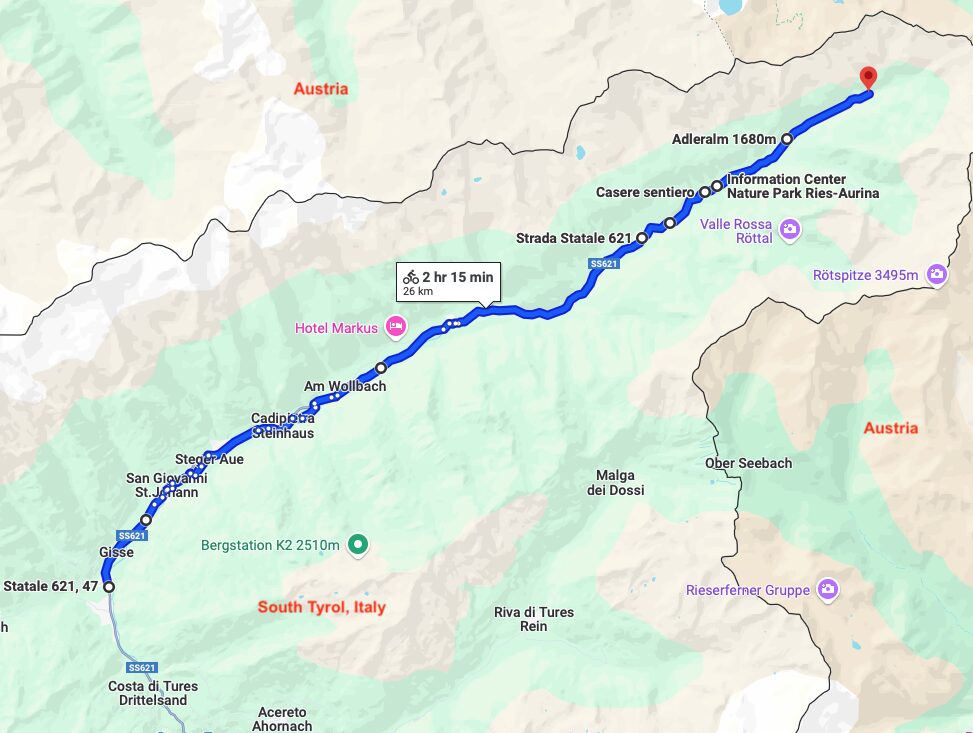Friday 26 September 2025
Considering we slept on the floor on a futon mattress I had a good nights sleep. I was still awake early, but felt well rested. We got the bikes from the garage where we had stored them the previous night and then headed to the restaurant for breakfast. We were early by about 10 minutes but didn’t want to change the schedule with the breakfast staff, so we had our coffee and waited.
When the morning cook saw us at the table, he bought us our breakfast straight away. What an awesome breakfast it was. He set the two trays down in front of us. Then explained what was on the trays – The fish was grilled and it was a local Japanese fish (similar to mackerel), miso soup, salad and rice in a soy sauce broth. He forgot to tell us that there was an egg on top of the rice. I was so pleased that we had chosen the Japanese breakfast. It looked and tasted amazing.
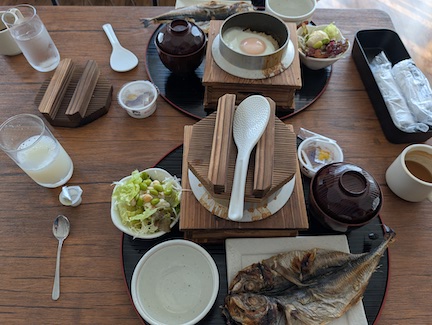
After breakfast we loaded our bikes and headed out towards Hamamatsu. We thanked the staff, what a lovely place to stay.
Today’s planned ride was anything from 35 km to 47 km. Sometimes RidewithGPS, Garmin and Google maps have different ideas as to which way we should cycle. RidewithGPS won today and got us to Hamamatsu at 37.6 km. It was a lovely route with the occasional sections on Highway 105 which is a busy road. The Pacific Coast Cycle Route would have taken us down to the coast and then back up to Hamamatsu. As we had plugged in the address to the hotel the Garmin didn’t add the extra 20 kms to the coast.
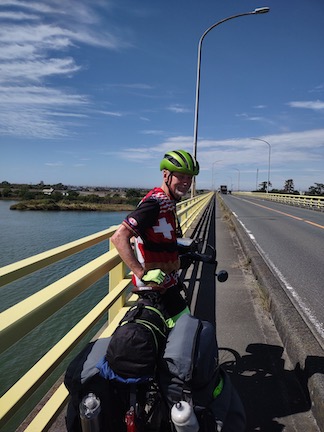
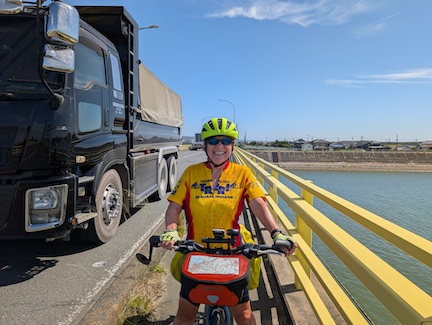
We went through some nice villages. Ralf really likes the roof-line on these houses. He was going to suggest to Diane and George, our neighbours, that when we need our roofs replacing we could do them in this style.
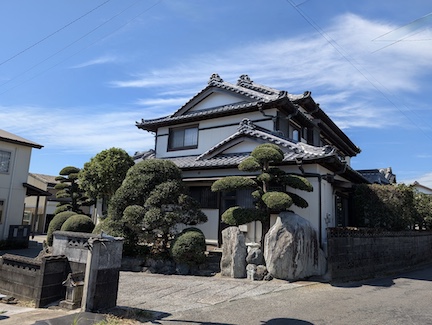
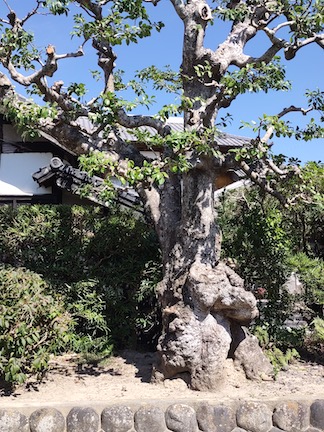
I have no idea what this tree is, I loved the texture.
We passed a massive Corning Factory. It was in the middle of nowhere. When Honda built their first car factory in Ontario they built it in an area that was primarily farm land (Alliston). One of the reasons for this logic is that they have a work-force close by that is well paid and no longer farming.
Farming here, as in a lot of places is tough, and less people are following in their families footsteps and working the small farms. Most of the rice farmers in Japan are over the age of 60.
It was another hot day, with a slight cooling breeze. Fortunately we were done by noon.
Before going to the hotel we decided to find a bank to get some money. When we were in Taiwan last year, the 7/11 had ATMs with no charge or low charge fees to withdraw money. In Japan the banks and the ATMs charge a similar fee about 100 yen per 10,000 yen, so about $1.00 per $100. We went to the bank and it would not accept Ralf’s card. We went into the bank and the kind lady offered to help us at the ATM. It still didn’t work – the card was too big!!
We went to a FamilyMart where we could withdraw a weeks worth of cash for a $5.00 withdrawal fee.
We were still too early to check-in, but the staff were very nice and gave us a map to find a good coffee shop. At 2:40 we returned to the hotel and they checked us in. Yes, the bikes are back in their bags and in the room. Alternatively, we could have left them outside the front door. Once we were showered we headed upstairs to get all of our washing done. It is nice that a lot of the hotels have laundry facilities for the guests.
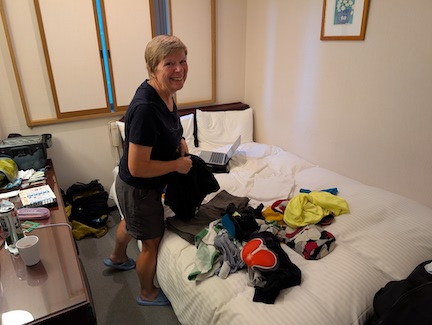
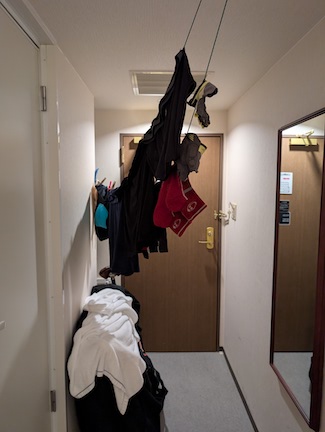
On the map of restaurants we found a German Restaurant/Bierkeller. Of course we had to try it. When we walked into the restaurant we asked in German if they had a table for two. The poor hostess looked like a deer in headlights. We laughed and switched to English, it was funny at least to us.
The beer was good, the food was good, having to order through a QR code was not fun and having the food delivered by a robot was interesting.
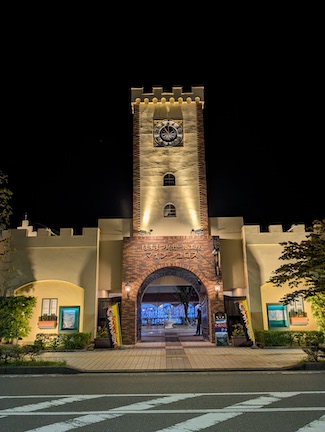
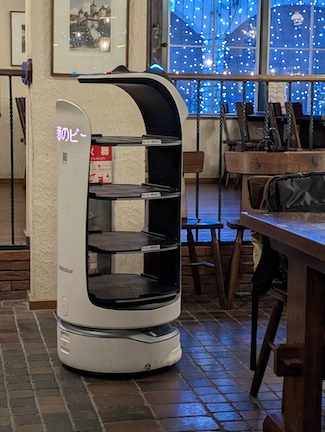
Watching my German husband eating German potato salad with chopsticks is something I never thought I would see.
